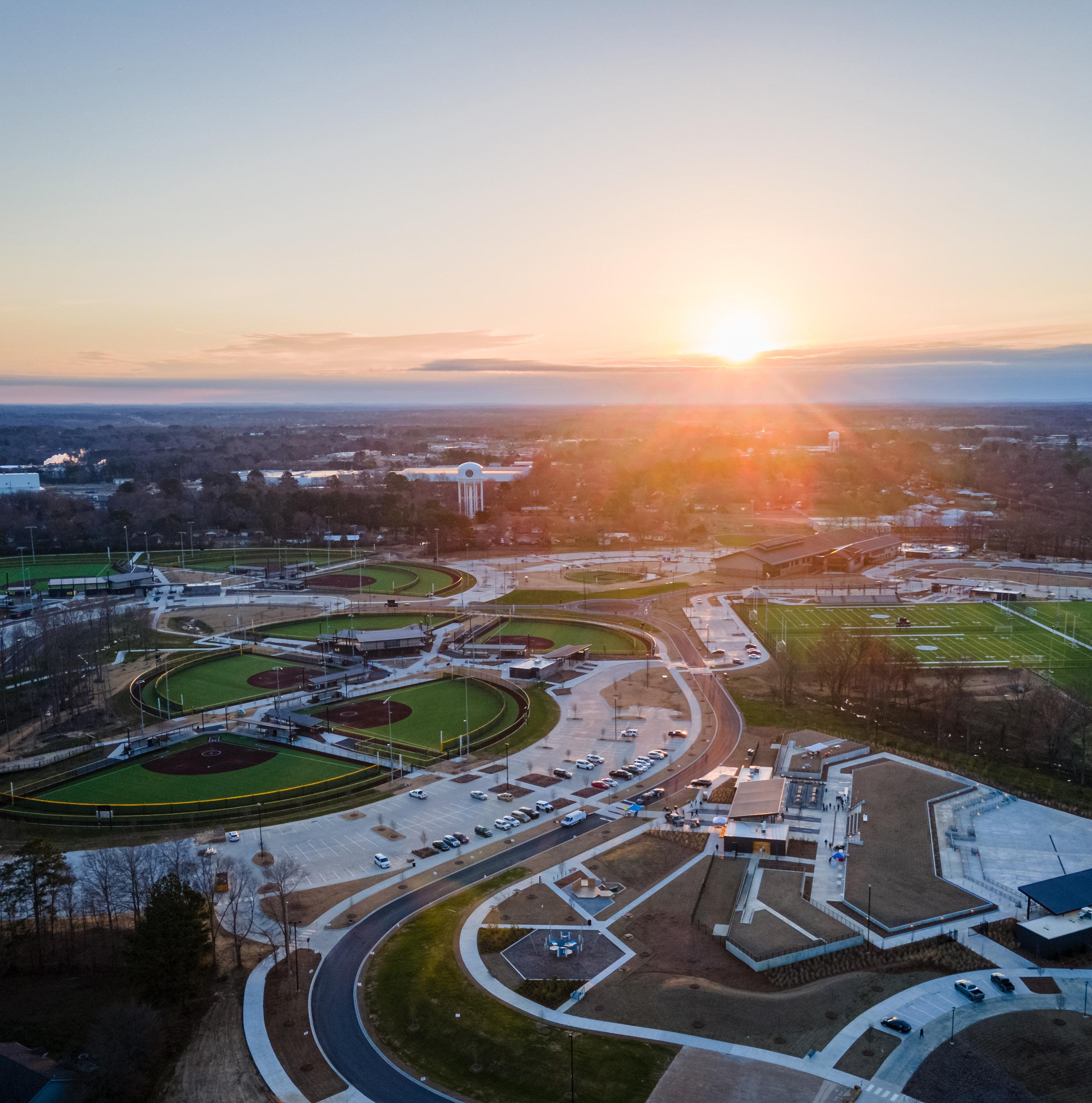
MAGAZINE Inspiring the next great American community June 2023 - Issue 01 US Trends in Team Sports Report: SFIA | Tom Cove INDUSTRIES COLLIDE: Community Spotlight Albertville, AL The Future of Parks & Recreation Playmaker Spotlight Arts and Tourism
We serve municipal leaders of communities large and small by bringing together the intersection of tourism, economic development, amateur sports, and recreation in a way that no one else does. We bring private-sector innovation to government leaders to help protect and secure the future of sport, recreation, and tourism in America.
Editor in Chief
Ashley Whittaker
Feature Editor
Johnny Crosskey
Digital Editor
Johnny Crosskey
Assistant Editors
Andrea Brown
Ali Yenchick
Contributing Writers
Johnny Crosskey
Joe Bush
Michael LoRé
Judy Leand
Scott Michael Powers
Tyler Williams
Maureen DeLong
Advertising Inquiries
Creative Team
Tristan Makaroff
Makenna Parks
Andrew MacArthur
Research Coordinator
Cameron Connelly
Website Manager
Stephen Shafii
Playmakers,
You may be wondering what we mean when we say playmakers or why we chose to use this name for the title of our publication and media platform. While we do think it sounds cool when applied to visionaries and leaders such as yourself, the name has its roots in sports and community recreation. On the soccer field, the playmaker is involved offensively and defensively, setting up plays with their skills in vision, strategy, creativity, and control. They lead the team and influence the flow of the game. We can’t think of a better way to celebrate and honor local government leaders who accomplish exceptional things in their community than to designate them as Community Playmakers.
For the last 20 years, we’ve served local leaders of cities and counties, large and small. We’ve had the pleasure of counseling them, some who have grand plans for economic growth and others who have a passion for enriching the lives of their residents – while the majority have both. This publication and platform is dedicated to all public servants who use their time, talent, and resources day in and day out to improve the lives of their constituents.
To all current and future playmakers in communities across the Nation, we hope you are inspired, educated, and engaged by our content. We want to arm you with the knowledge to innovate and call the very best plays on behalf of your cities, towns, and counties.
Peace, love, and community service
Ashley Whittaker Editor in Chief, Community Playmaker Magazine
email: sales@communityplaymaker.com
General Inquiries
email: info@communityplaymaker.com
Issue 01: Summer 2023
No part of this publication may be reproduced in any form or by any means, electronic or mechanical, without the permission in writing from the publisher, except small excerpts for review purposes. Submitted work, reviews, ads, and photographs are copyrighted by their respective owners.
Copyright Community Playmaker Magazine 2023.
2 | COMMUNITYPLAYMAKER.COM • JUNE 2023
Cover Image Source: Sand Mountain Park and Amphitheater - SoFly Productions
JUNE 2023 • COMMUNITYPLAYMAKER.COM | 3 COLLIDE COLLIDE INDUSTRIES INDUSTRIES THE Future of Parks & Recreation THE Future of Parks & Recreation IN THIS ISSUE FEATURE 6 COMMUNITY SPOTLIGHT Albertville, Alabama 14 QUALITY OF LIFE Not Your Father’s Library 20 CENTRAL TOPIC Industries Collide: The Future of Parks & Recreation 32 TREND/INNOVATION Combining Public Sector Resources & Private Sector Knowledge 40 HUMAN INTEREST How Fort Collins Developed Equitable Public Transit DEPARTMENT 4 PLAYMAKER SPOTLIGHT Grover Robinson, IV Former Mayor of Pensacola, Florida Using Local Arts to Spark Economic Growth 12 COMMUNITY PLANNING Wild as the Colorado, Warm as Costa Rica 26 PLAYMAKER TRENDS Insights for Leaders from the SFIA’s “U.S. Trends in Team Sports” 30 COMMUNITY DEVELOPMENT Sports Tourism as an Anchor for Development 36 COMMUNITY OPERATIONS Four Pillars to City Impact JUNE 2023 - ISSUE 01 P22
Source: Original artwork by Playmaker staff
GROVER ROBINSON IV, FORMER MAYOR OF PENSACOLA, FLORIDA
By Johnny Crosskey
For Grover C. Robinson IV, former mayor of Pensacola, Florida, being involved in the local community wasn’t as much a choice as an obligation. His father Grover III (a state representative for 14 years) and his grandfather Grover Jr. (a longtime judge) drove home the importance of using your time and energy to make an impact in your community.
During his mayoral campaign, he told the Pensacola News Journal (PNJ) that it was not enough to live somewhere and that he was taught it was his duty to “participate and make his community better.”
“That doesn’t mean you had to go into elected office, but there was certainly an expectation that you served on community boards. That you did things to make the community better,” Robinson told the PNJ.
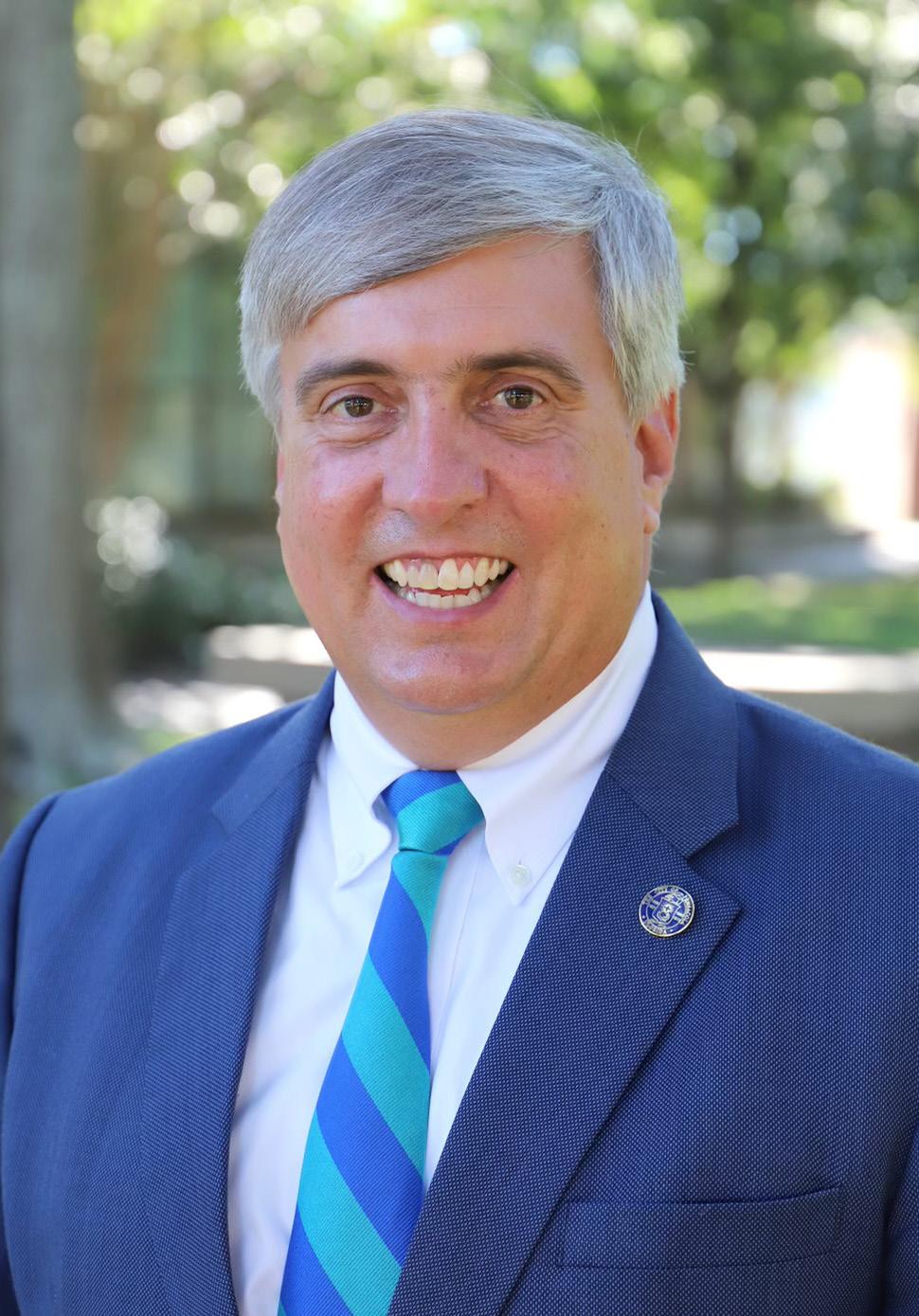
That commitment to service, which spans 12 years on the Escambia County Commission and four years as mayor of Pensacola, has driven him to lead or support several initiatives that shape the Pensacola we see today. This includes cultivating and promoting an arts culture that has ignited the city’s economy and allows it to be a year-round tourist destination.
Diversifying Pensacola’s Tourist Economy Through Arts and Entertainment
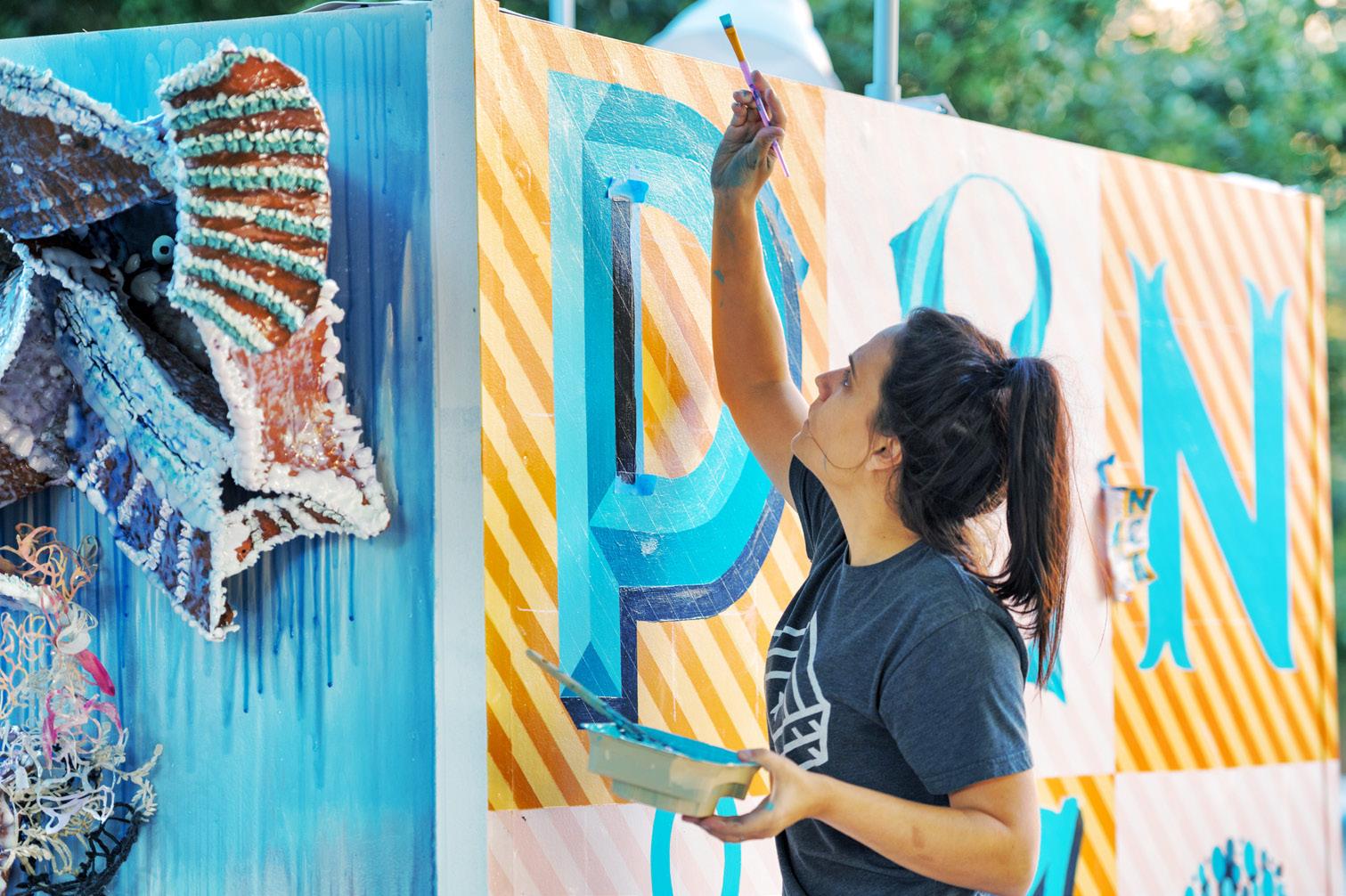
One of the most significant shifts Robinson championed in his time in office was the diversification of Pensacola’s tourism-based economy. While nearby cities like Destin and Gulf Shores rely heavily on seasonal beach tourism to drive tax revenue, Pensacola uses one of the most vibrant art scenes in the South, highlighted by the Pensacola Museum of Art, the
Pensacola Symphony Orchestra, and major events like the Foo Foo Festival and the Gulf Coast Jazz Festival to drive visits during non-peak seasons.
“I think one of the biggest things we did in the early 2000s was realizing that if we were going to be a great community, we had to be a community that people wanted to be a part of,” said Robinson, who also served on the city’s planning board. “So, we began to focus on our amenities. For so long our focus was that we have great weather and the beach, but when you look at Florida, there are a lot of places that have great weather and the beach. So how do you begin to distinguish yourself? I think that was where we realized that the opportunity to capitalize on our culture and heritage was certainly there. In Northwest Florida, there are a lot of places, including Destin and Orange Beach,
4 | COMMUNITYPLAYMAKER.COM • JUNE 2023
HOW SUPPORTING LOCAL ARTS ORGANIZATIONS IS KEY TO SPARKING ECONOMIC GROWTH Playmaker Spotlight
Photos courtesy of Jarrod England/Foo Foo Festival/Hummingbird Ideas
that have great beaches, but after a while on the beach, you want something else to do. I think the only place that gives you that downtown experience is Pensacola.”
get with Pensacola Sports and Visit Pensacola. The decision to combine the budgets was driven by the desire to promote partnership among organizations with the shared goal of bringing more people to Pensacola. As they work together and bring increased tax revenue, each organization’s portion of the unified budget increases as well. ACE uses the funding it receives from the county to provide grants to support programming from local arts organizations.
A Legacy of Public Service
For Robinson, making his community better has not only meant advocating for it and championing a diverse economy but also fighting for it during tough times like the wake of the BP Oil Spill. Robinson was instrumental in lobbying for Florida’s Gulf Coast counties to garner a portion of funding granted as a part of the RESTORE Act. The act ultimately allocated $292 million in relief to Florida, with $70.9 million going to Escambia County by 2031.
A key part of diversifying Pensacola’s economy was shifting the perception of the impact that arts and entertainment could have on the city from both a placemaking and revenue-generation standpoint. To do so, a shift also had to be made in how the arts were funded.
Until 2008, art organizations in Pensacola were supported by the Arts Council of Northwest Florida, which was formed in 1969. However, after 40 years, it was determined that the group’s approach to promoting the arts did not drive broader interest, including from visitors to the city. The local arts and business communities formed Art, Culture, and Entertainment, Inc. (ACE) in 2008 and focused primarily on raising money and providing grants for the city’s arts organizations and artists.
The organization receives funding from Escambia County as part of a unified bud-
Of the development of ACE, Robinson said, “There were a lot of organizations coming in and seeking money, but the money wasn’t making its way to the arts, and it was getting tied up in the Arts Council. So, the idea of ACE was to come in and level out some of the administrative parts and get more dollars to the actual arts organizations. And in doing this, they needed the government to come in and provide some additional money. And so, we went into tourism development and said, ‘Ok hoteliers, we’re going to give you something in a shoulder season to drive visitors to the area.”
Pensacola’s primary tourist season is from March to September, which Robinson said was why ACE created the Foo Foo Festival and hosted it in November. The Foo Foo Festival is a 12-day celebration that features performances from artists and arts organizations throughout downtown Pensacola. According to ACE, last year’s event welcomed over 75,000 visitors, a fourth of which were from outside of Escambia County, driving an estimated $12.7 million in economic impact.
Overall, the arts have been good to Pensacola. Along with providing critical acclaim for a bevy of arts and entertainment festivals, a 2015 report from the Arts and Economic Prosperity Project estimates that arts organizations in Escambia County generated over $58 million in economic impact.
“My dad said you don’t want to govern where you live. It’s too messy. I thought, ‘How do you make the place you live better if aren’t willing to do it?’ It can be very messy, but it can also be very rewarding. So, I think at the end of the day, if you have a passion, if you want to make your community better, there’s no better thing to do than public service, and there’s probably nothing that could be more rewarding for me.”
In the wake of the BP Oil Spill, Robinson was a key player in lobbying for relief for the Gulf Coast counties.
County by 2031
JUNE 2023 • COMMUNITYPLAYMAKER.COM | 5
The RESTORE ACT: $292 million in relief to Florida $70.9
to Escambia
“I think one of the biggest things we did in the early 2000s was realizing that if we were going to be a great community, we had to be a community that people wanted to be a part of”
million
SMALL-TOWN AMERICA AMERICA
By Judy Leand
Photography: SoFly Productions
There had been a proposal for a new recreation center in place for probably the last 20 years,” says City of Albertville Mayor Tracy Honea. “Once we came [into office], it became evident fairly quickly that we wanted to expand beyond what had formerly been discussed. We went BIG. Way bigger than what we previously envisioned.”
There’s a dramatic shift in how sports facilities impact communities taking place across the country. There may be no better example of this movement than in Albertville, Alabama, part of Marshall County. The city, with a population of 26,000 people, is home to Sand Mountain Park & Amphitheater, a 130-acre, state-of-the-art complex that provides elite-level athletic facilities, family-friendly public recreational spaces, and live entertainment. The
facility, operated on the city’s behalf by a third-party management firm, Sports Facilities Companies, includes everything
outdoor water park, indoor and outdoor basketball courts, event spaces, dog parks, an RV park, a fitness center, a 5,000-plus capacity amphitheater, and more. The venue represents the newest evolution in sports travel destinations, but just as importantly, it was designed and built by and for the local community with the mission of improving the health and economic vitality of the Sand Mountain region. Since its opening in 2020, the project has been a resounding success on all fronts. In 2021, the park hosted more than 75 large-scale sports events and concerts that generated an economic impact of $14.2 million for Marshall County. In 2022, Sand Mountain hosted over 100 events, and the economic impact for the county climbed to $23.2 million.
from racquet sports courts to diamond and long fields, an aquatic center, an

“While we’re the largest city in Marshall

In 2022, Sand Mountain hosted over 100 events, and the economic impact for the county climbed to $23.2 MILLION.
SMALL-TOWN HOW EMBRACED THE FUTURE OF PARKS, SPORTS, & ECONOMIC DEVELOPMENT “
County, with 23,000-24,000 people, we didn’t even have a Walmart. This may not sound like a big deal, but from a retail stance, we were struggling. If you’re trying to recruit retail, it’s easy to recruit next to or across from Walmart. Adding sports tourism was a tool. During the planning process, it became evident that if we did enough of the right things, it would drive new economic development,” Honea explains.
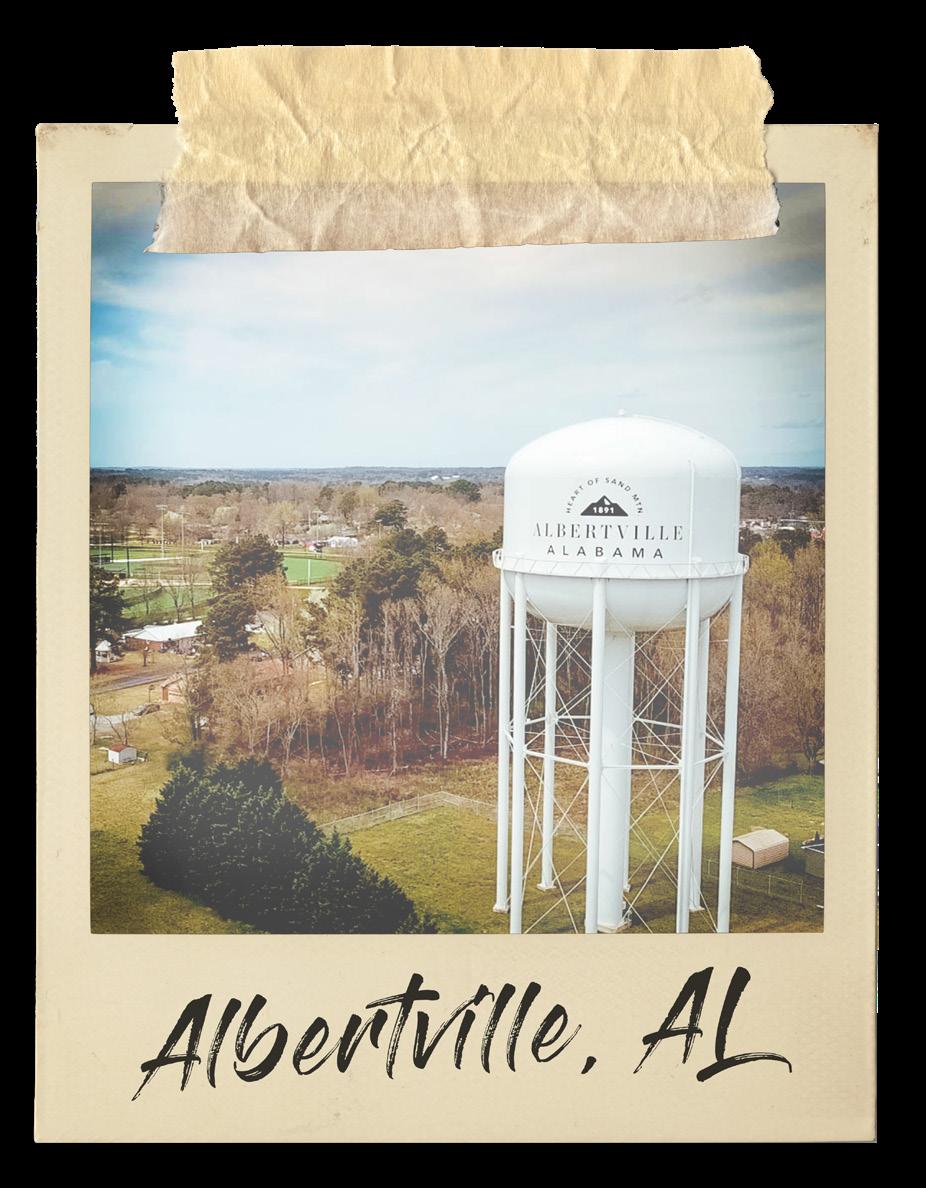
Concept & Vision

The intent in creating SMPA was to do something for the community— particularly for the youth. The key to the project’s success would be to strike a balance between the local community’s needs and the travel sports teams and other visitors who would want to utilize the venue.

 Brantley Gilbert Concert | Summer 2021
Brantley Gilbert Concert | Summer 2021
“The original vision was to [serve] our community, but mixed in with that, when we decided to move as big as we did, there had to be the economic impact in order to pay for it,” Honea says. Sand Mountain Park & Amphitheater was funded through a one percent increase in sales tax. Along with funding for the construction of the park, the sales tax increase funded several capital improvements.
The time frame from concept to fruition for SMPA spanned about seven years, and the city made a point of involving a lot of sectors of the community—including coaches, businesspeople, and others— in the development. “From the time we broke ground, it was about a two-anda-half-year build process,” says Honea. “There were a lot of challenges. We ran into everything from hitting rock to dealing with COVID-19 to dealing with two of the rainiest seasons we’ve had in our history. But hard work pays off. There were relentless efforts made by lots of folks.”
Overcoming Challenges
As Honea alluded to, with a project the size and scope of SMPA, there were bound to be hurdles. “Budget was always an issue, and construction throughout the process was an issue,” recalls Honea. “Throughout all of the challenges that came our way, we collectively maintained a can-do attitude. [Regarding construction], we, fortunately, finished this project just as rates were beginning to escalate on materials.” Of course, the real lesson here doesn’t lie in the challenges themselves but in how the community responded and dealt with the difficulties. “There wasn’t one rock star that made all this happen—everybody came together when it mattered,” says Mike Brewer, director of human resources for the City of Albertville. “When it was game time, and we were in the heat of the battle, everybody pulled together. There was a great sense of community during construction and during the process, and
Sand Mountain Park & Amphitheater was funded through a one percent increase in sales tax. Along with funding for the construction of the park, the sales tax increase funded several capital improvements.
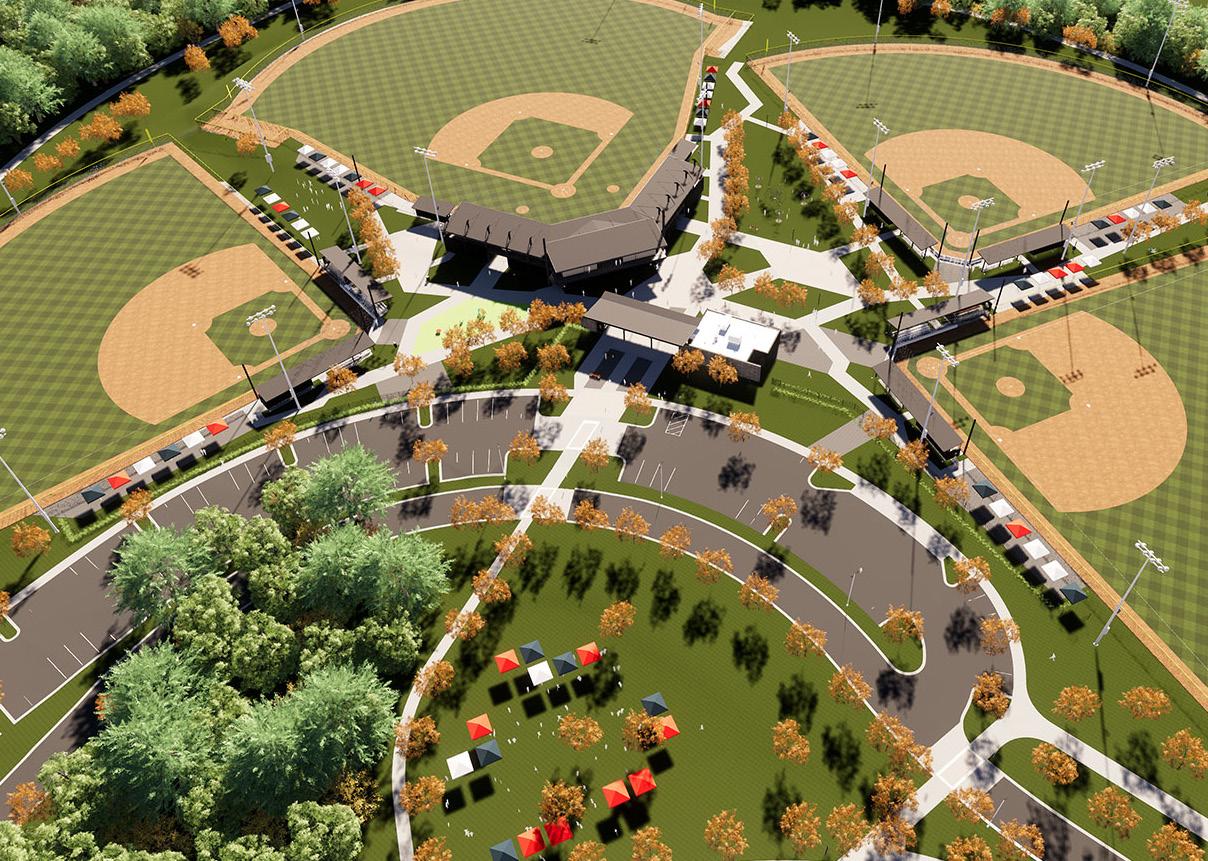
all of the challenges we faced became manageable because of that.”
Tourism and Development
SMPA’s impact on tourism and development in Albertville has been
indisputable. “We’ve got something here that brings folks in from out of town — a lot of weekends out of the year. It’s helped us,” says Honea. “We’ve got two hotels. One is open, and the other is about to open, and we’ve had several retail projects that have landed. The hotels and some of our new restaurants wouldn’t be here had the park not been built.”

Honea and his visionary city team haven’t stopped imagining the future of the park: there are still a few opportunities for further expansion of SMPA. “We pretty well went all in with the idea from the start,” he says. “Sand Mountain Park isn’t maxed out, but we’re in year three, and we’re looking at some potential things that we could either add, change, or do to draw more people.
There’s talk about adding on to the water park, and there’s space if we choose to do that.” This year, the team added a temporary ice-skating rink to maximize off-peak usage of their amphitheater. They went big again – it’s the largest outdoor real ice rink in Northern Alabama.
8 | COMMUNITYPLAYMAKER.COM • JUNE 2023 Community Spotlight
Early rendering of Sand Mountain Park & Amphitheater
Photo credit: Chambless King Architects
While Honea is happy about what SMPA has already done for Albertville, he is also excited about what the park will do for the entire region. He points out that North Alabama is very scenic, and there is a plethora of outdoor activities at nearby lakes, rivers, and mountains. “[The area] gets quite a bit of tourism through bass fishing and water sports, and our state parks have hiking, camping, and other outdoor activities. I think as we move forward, Sand Mountain Park will [serve many people]. Our vision is that this isn’t only for Albertville but for the entire North Alabama region. It’s already drawing folks to come and stay a little longer and explore all we have to offer,” he says.
Benefiting the Community
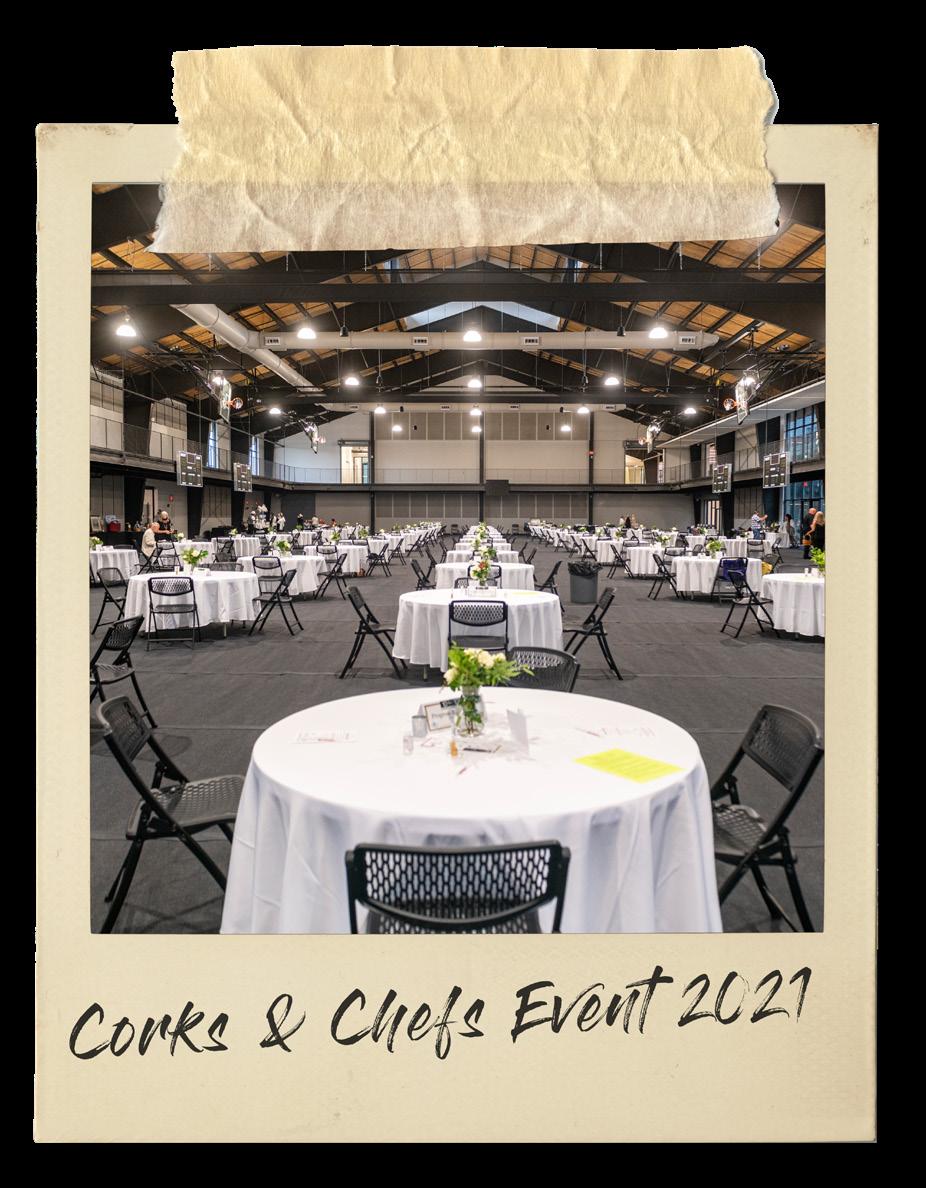
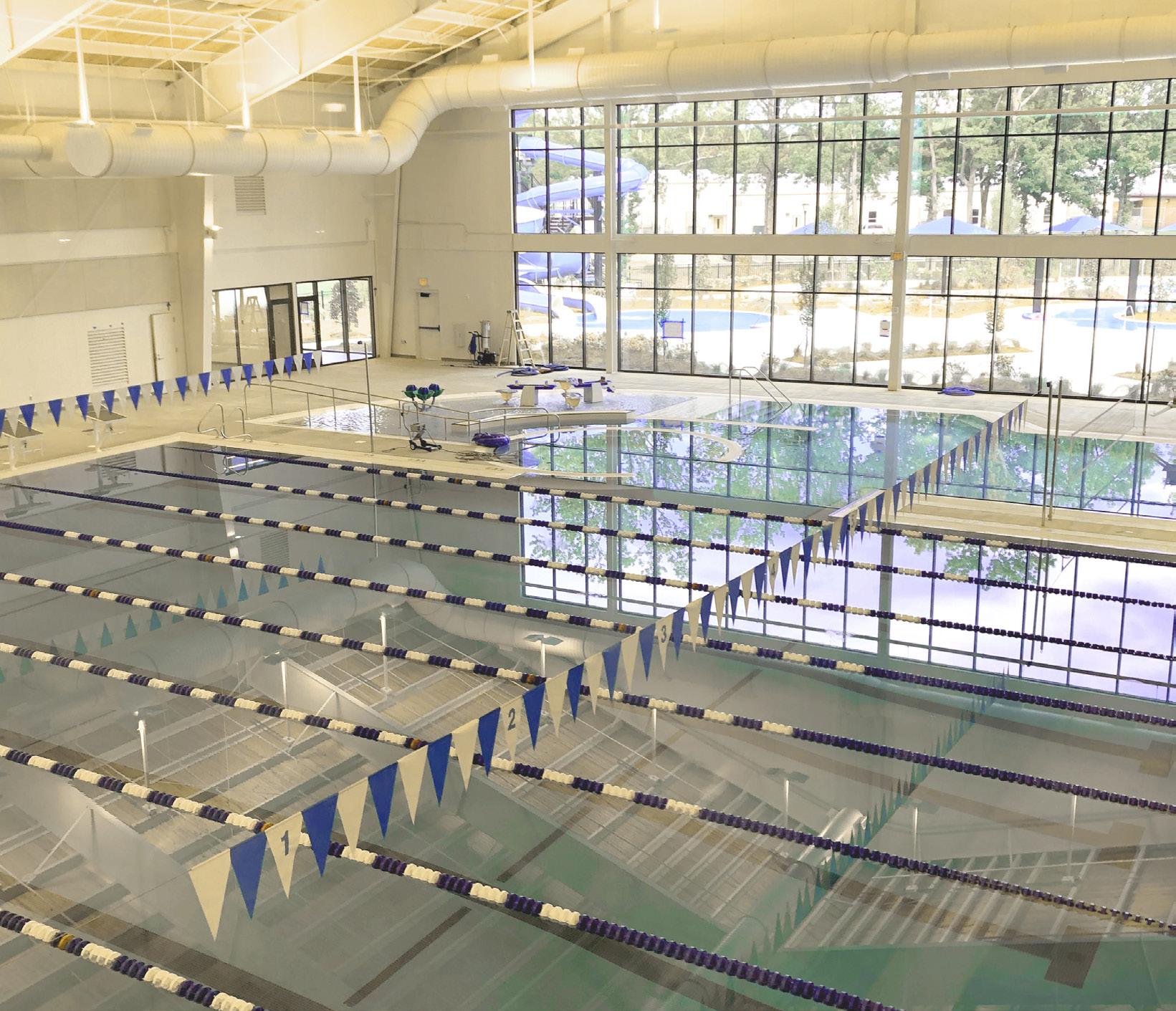
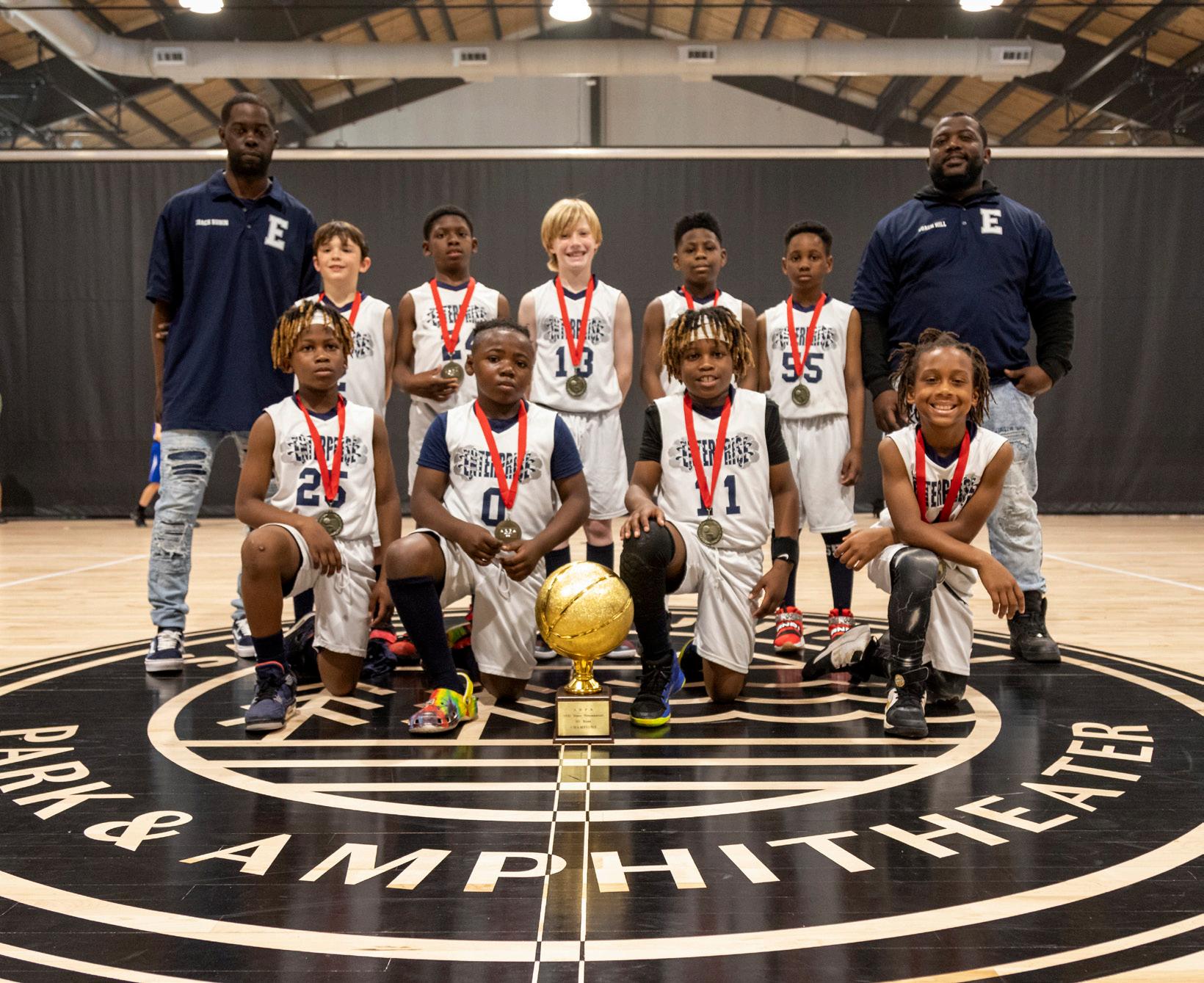
One of the best things about SMPA, in Honea’s and Brewer’s view, is that it provides an everincreasing menu of activities for community members. “You can go out there any night of the week; the basketball courts outside are full, people are walking the trail, and the dog park is packed. There are so many aspects of the park for the community, and that’s before you get into all the programming available,” Honea remarks. “That’s the beauty of the original concept— its ability to cater to all the needs of our community while simultaneously showing off our area to visitors and sports events. If anything, I think the community aspect may increase over time with more amenities. We’ve constantly got our eye on improving the value to the area.”
Honea continues, “There’s a health and
JUNE 2023 • COMMUNITYPLAYMAKER.COM | 9
Youth league basketball champions
Eight lane competition pool and aquatic center
MAYOR’S THOUGHTS
wellness aspect this community has not had [prior to Sand Mountain Park]. We now have a top-notch facility that people can benefit from; an improved quality of life is one of the biggest things that the park has brought to the community.”

Just as crucially, says Brewer, SMPA has helped to build a local sense of pride. “It’s renewed our belief in the great qualities of this area. When you have a town that’s fired up and excited, and everybody is getting along, it’s a great feeling to be a part of all of it,” he explains. “We all are sharing in the pride and sense of accomplishment that it’s brought, whether economically or through quality of life. The greatest benefit is hometown pride.”

Friendly Advice
For communities pondering the development of similar projects, nothing trumps the importance of knowing your community and its specific needs. Put simply, “Know your ‘why.’ Understand why you’re doing it,” offers Brewer. “This park was tailor-made for Albertville and the region. Our advice for other areas would be to ‘do you.’”
Furthermore, says Honea, “What we’ve got isn’t necessarily what [other communities] need. You’ve got to understand the identity of your community and which components make sense. My advice is to take advantage of your unique resources, people, and unique characteristics.”
10 | COMMUNITYPLAYMAKER.COM • JUNE 2023 Community Spotlight
Mayor Tracy Honea City of Albertville, Alabama
“We now have a top notch facility that people can benefit from; an improved quality of life is one of the biggest things that the park has brought to the community.”
AFC
In October of 2020, Albertville hosted the Alabama Fighting Championship: Five On It
 5 at Sand Mountain
Image Source: Sand Mountain Park & Amphitheater - SoFly Productions
5 at Sand Mountain
Image Source: Sand Mountain Park & Amphitheater - SoFly Productions
WILD AS THE COLORADO, WARM AS COSTA RICA:
HOW A SMALL TOWN IN GEORGIA BECAME THE LONGEST URBAN WHITEWATER RAFTING AREA IN THE WORLD
By Judy Leand
Uptown Columbus, situated on the banks of the Chattahoochee River, has become a magnet for whitewater enthusiasts of all stripes. But it wasn’t always like that. In the 1850s, civic leaders installed dams in the river to generate hydroelectric power for the surrounding textile mills. However, as this industry waned over the next century, community leaders faced a crossroads: go big and take a chance on an unconventional vision or play it safe and risk a slow, quiet decline of their city. In the early 2000s, the decision was made to remove two dams to restore natural water flow to a 2.5-mile stretch of river adjacent to the city’s urban core. These enhancements paved the way to establish Columbus as a world-class rafting and whitewater waterway.
The river, which reopened in 2013, offers the longest section of urban whitewater rafting in the world, boasting more than five class IV+ rapids and 10 smaller rapids. With a dam-controlled flow, the course provides low-flow whitewater in the morning allowing for family-friendly adventures. In the afternoon, the high flow kicks in, sending up to 13,000 cubic feet per second of whitewater. At this point, the rapids jump from class III to V.
The entire project had a $26 million price tag. With the City of Columbus and the federal government contributing about $6 million and the remainder being raised privately. According to Ed Wolverton, president and CEO of Uptown Columbus Inc., Uptown BID, and WhiteWater Management LLC.

“The entire project took about 15 years to come together,” he says. “We had significant hurdles to address from the United States Army Corps of Engineers along with environmental challenges related to impacts on fish and vegetation. My organization acquired two dams in the river, with one dating back to the 1860s.”
Because of these land acquisitions, we actually owned about a 2.5-mile section of the riverbed. After hiring a design firm, tweaking water channels, and fabricating and installing an underwater wave shaper device, we blew the dams and opened the course in 2013. We then donated our riverbed land to the City of Columbus, and they now lease it back to us to operate river attractions.”
12 | COMMUNITYPLAYMAKER.COM • JUNE 2023
Community Planning
Image Source: visitcolumbusga.com
With the success of the whitewater elements, more exciting features were added including a zipline that spans over the river from Georgia to Alabama and back again, a splash pad, a playground, a disc golf course, and a hammock park. This is anchored by a 16-mile hiking/ biking trail along the river. Last year, a connector to other bike trails was completed, creating a trail network of about 60 miles. The combined assets are known as RushSouth Whitewater Park and all are part of Uptown Columbus’ thriving business district.
Columbus now averages 30,000 to 40,000 rafters annually. “As it is the southernmost area of the country that can offer yearround whitewater, kayakers from around the world also come here to enjoy our waves,” says Wolverton.

Prior to starting the project, Columbus State University conducted an economic impact analysis which estimated an annual impact of $42 million and 700 jobs. “In my professional opinion, the impact was overestimated,” says Wolverton.
“This being such a unique attraction, they had almost no comparable projects to use. Although we are now celebrating our 10th anniversary, we have been unable to fund a new study using operating data. While rafting and zipline numbers are easy to generate, the number of free users like kayakers, anglers, and others is a guess at best.”
However, Wolverton points out that since the project’s completion in 2013, Uptown has generated more than $721 million of new projects including complete, underway, and announced. These run the gamut from shops, restaurants, and offices to residential. Additionally, four new hotels have opened since 2021 including an Indigo, AC, Hampton Inn, and a 62room boutique property.
“We’re thrilled to have the RushSouth Whitewater Park,” says Merri Sherman, executive director of the Columbus Sports Council. “The course is just steps away from restaurants, boutiques, and attractions and it’s a beautiful natural resource. Groups come in year-round to kayak and raft the river, and a lot of sports groups that visit for other events also take advantage of the rapids and often tack on a couple of extra days to their visits.”
“This is one of the most exciting places in the U.S. to go whitewater rafting,” exclaims Daniell Gilbert... Operations Manager of Whitewaters Express
“This is one of the most exciting places in the U.S. to go whitewater rafting,” exclaims Daniell Gilbert, operations manager of Whitewater Express, Columbus’ premier river guide and outfitter. He points out that the city is no stranger to international tourism, having previously hosted the Olympic softball competition in 1996. This past October, the city hosted the 2022 ICF Kayak Freestyle World Cup, which drew 106 athletes from 16 countries. This June, Uptown Columbus will host the 2023 ICF Canoe Freestyle World Championships that are expected to attract 300-plus competitors from more than 30 countries.
“These events have a big impact on business here, and people come to train year-round,” says Sherman. “The whitewater park serves a good combination of locals and visitors, and kayakers and other paddlers are moving to Columbus because of the resource. There are lots of things to do on the river and in town.”
JUNE 2023 • COMMUNITYPLAYMAKER.COM | 13
Image Source: Adobe Stock
By Maureen DeLong
Can you name a community asset with the tools to grow your business, boost your job skills, serve as a co-working space, reserve a movie, act as a tech-forward meeting space, host a camp, house art exhibits, showcase groundbreaking innovations,
If you said your local library, you’d not only be right, but you likely live in a city that has re-imagined the role a library can play in their community. With a tech-forward focus, customer-centric attitude, wide variety of programs and services, and a fresh approach to branding, librar-
Today’s libraries are having an economic impact on our cities as well. According to a 2021 study from the University of Florida Bureau of Economic and Business Research, libraries in Florida supported 4,353 jobs outside of their own staff and contributed $346.7 million to the state’s gross domestic product.
Here are two groundbreaking examples of libraries that have become neighborhood hubs and pillars of community vitality.
The Homestead Cybrarium, Homestead, Florida
In 2021, the city of Homestead, Florida opened the world’s first “Cybrarium”, a one-of-a-kind, ultra-modern public library. The Cybrarium is a 23,000-squarefoot, multi-floor high-tech library that marries traditional library services with advanced technology, immersive attractions, and innovative programming. It features a children’s theater, a virtual reality (VR) cube, a makerspace with a 3D printer, a Steampunk Lounge with an 1896 Chandler and Price letterpress and Book Mountain, and an interactive

sculpture that rises from the first floor to a ceiling-high solar system. Inviting interiors and themed spaces launch endless imagination, offering a portal to the past or an invitation to the future.
“The VR Cube is our jewel attraction for a lot of people. You’re not going to find a VR cube in any other library and that’s what really makes us special,” said Rino Landa, the Cybrarium’s Library Director. “This is a community that doesn’t really see this kind of investment very often, so having a unique space with services really tailored to the public, it’s a means of expanding the horizons of what’s possible.”

Part of the Downtown Homestead redevelopment project, the Cybrarium is the vision of the Homestead City Council, which voted to establish the Cybrarium as a municipal library in 2019. Prominently located in Downtown Homestead, a bustling destination for entertainment,
dining, and retail, the Cybrarium presents a modern approach to education and enrichment. Offering a robust, multilingual collection of physical and digital materials, STEAM kits, launch pads, laptops, and hotspots, the Cybrarium brings excitement to exploration and learning to residents of all ages.
“The Cybrarium is one of the highest drivers of traffic in our downtown. People are coming to downtown just to visit the Cybrarium,”
City Manager of Homestead, Zackery Good
JUNE 2023 • COMMUNITYPLAYMAKER.COM | 15
Assistant
“The Cybrarium is one of the highest drivers of traffic in our downtown. People are coming to downtown just to visit the Cybrarium,” said Zackery Good, assistant city manager of Homestead. “And not only our residents, but people from outside the community are coming to see what it is about. We’re getting news coverage because people are curious about the world’s first Cybrarium.”
“The Cybrarium has been a tremendous community asset,” adds Homestead Mayor Steve Losner.

Park Central Library, Manassas Park, Virginia
As part of a large downtown redevelopment project, the Park Central Library opened in 2022 within Park Central Plaza, an open-air, public square, and is redefining what people expect from a library.
Tailored specifically to the needs of the Manassas Park community, the Park
Central Library offers virtual reality, 3D printing, technology, programs, and services, in addition to a large collection of hard copy and digital books, and movies. Serving everyone from the City’s youngest residents to seniors and everyone in between, the goal was to get community members excited and engaged.
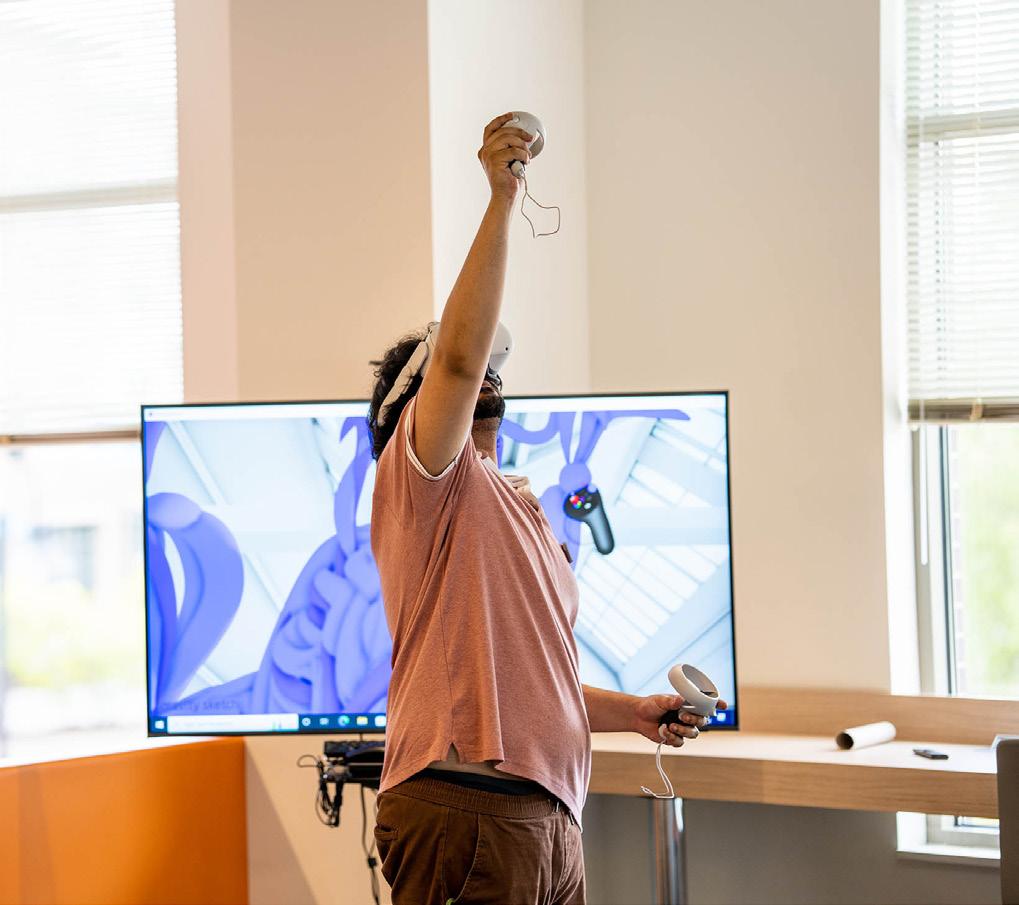
The library’s location and shared space for programs and meetings make it easy to collaborate on interesting services that might not typically be associated with libraries — such as a coffee shop, movies, concerts, and other fun community engagement activities.
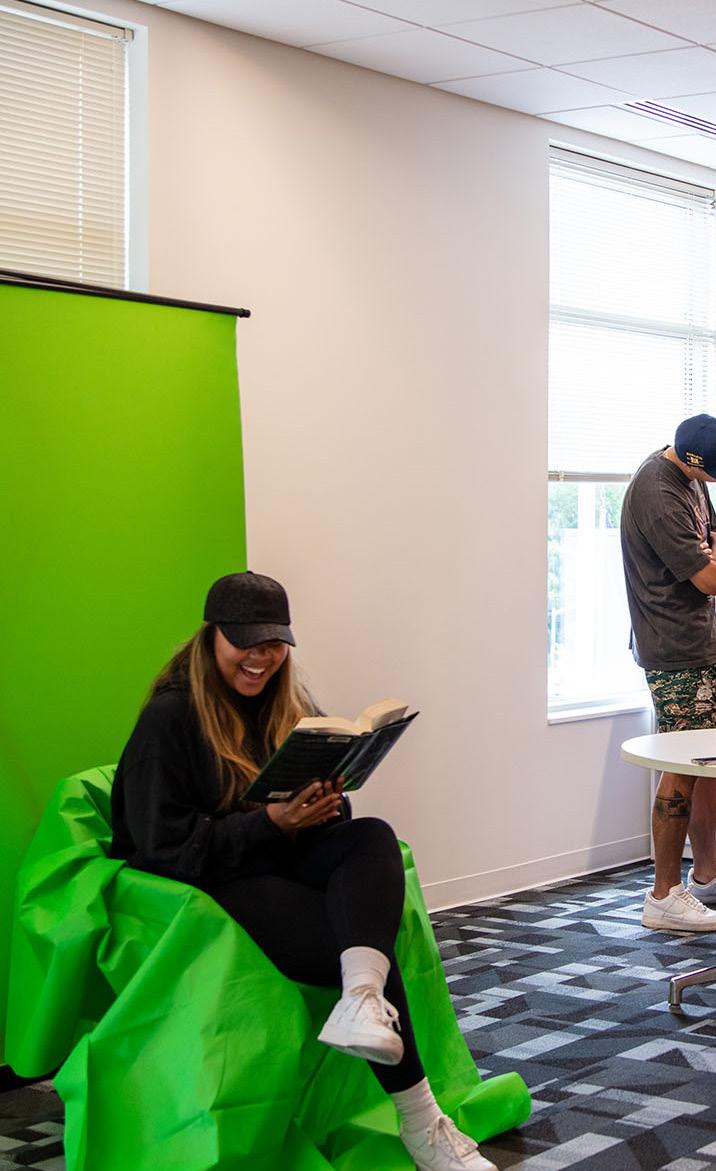
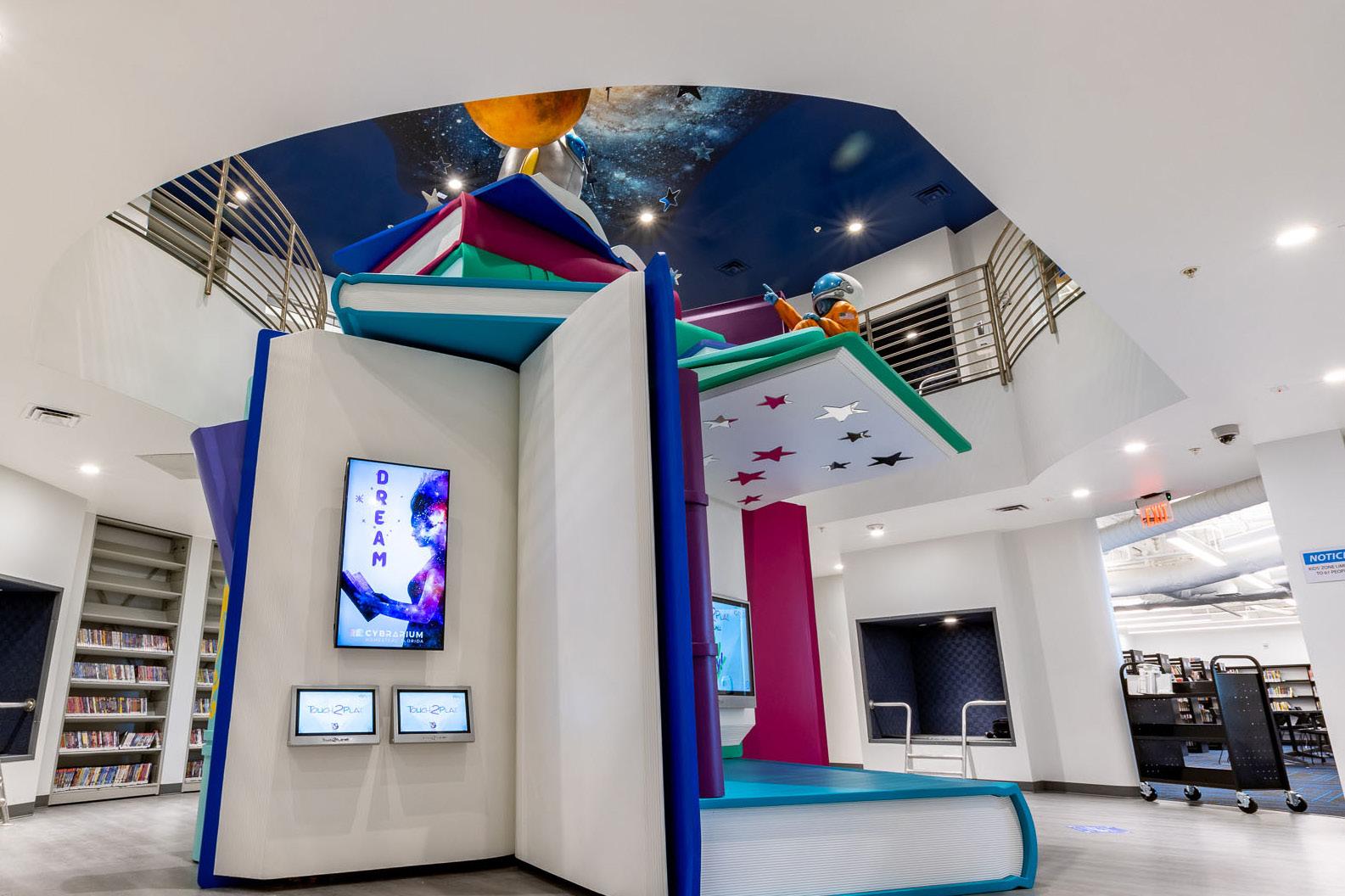
“A truly local resource, the new Park Central Library is an amazing asset for our community, offering education and enrichment options for every community member. Opening the library was a huge milestone in our downtown redevelopment project,” said City Manager Laszlo Palko. “A cornerstone of the Park
Central Plaza, the Park Central Library makes Manassas Park an even better place to live, work, and thrive.”
Palko explains what drove the de cision beyond a vision for the fu ture. “We were experiencing difficult financial times and faced tough budget decisions, but we felt it was important to prioritize our library and make sure it would get the attention and investment it deserved. While we work closely with the county and still outsource many programs to them, in our minds, the county mod el for the library was not serving the best interest of our community any longer,” notes Palko. “In the first year of running the new library, we reduced costs by 50 percent compared to what the county was charging us. The city was also able to secure state funding, bringing the savings closer to 70 percent.”
Images Courtesy of Library Systems & Services
Changing How We See Libraries
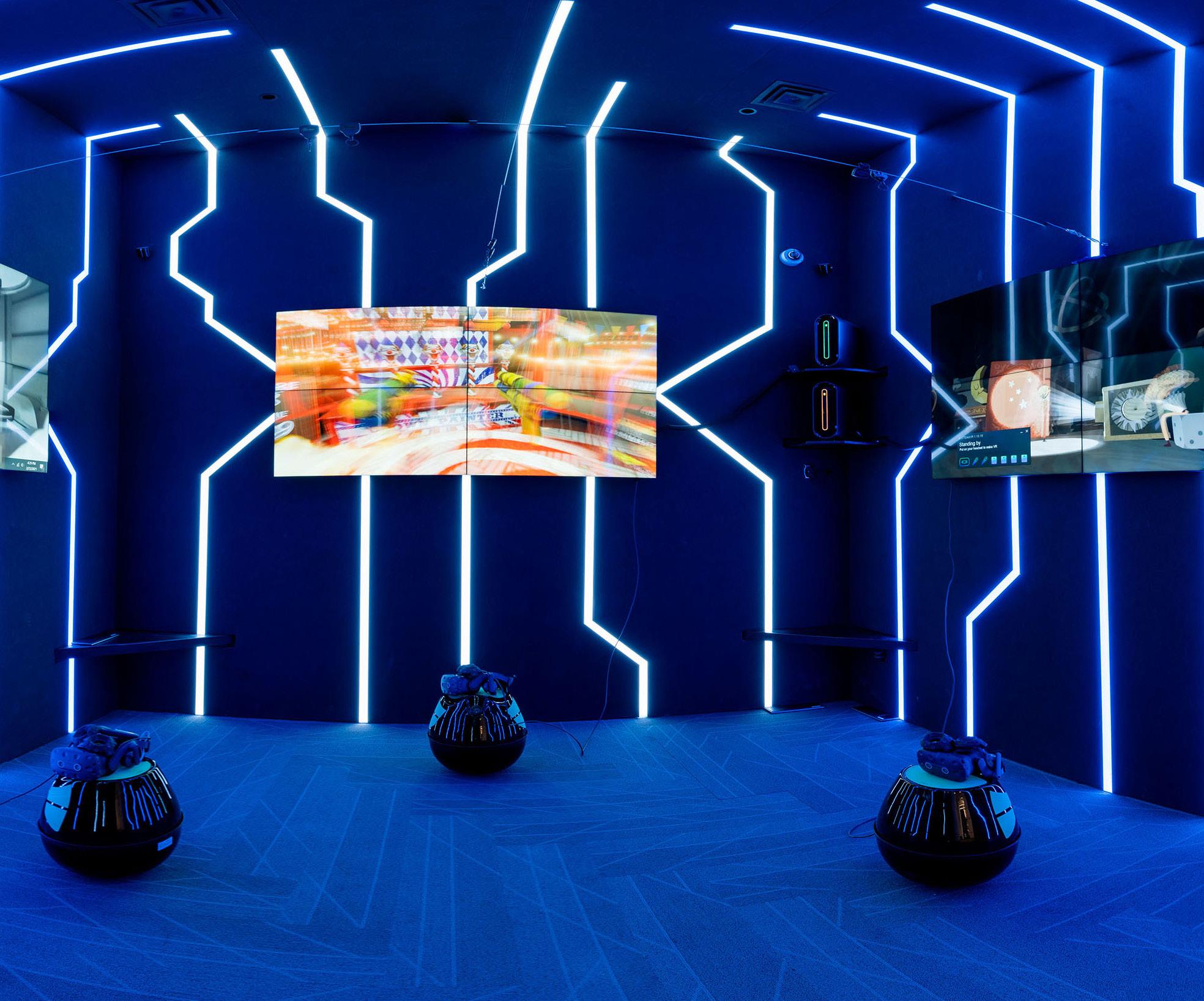
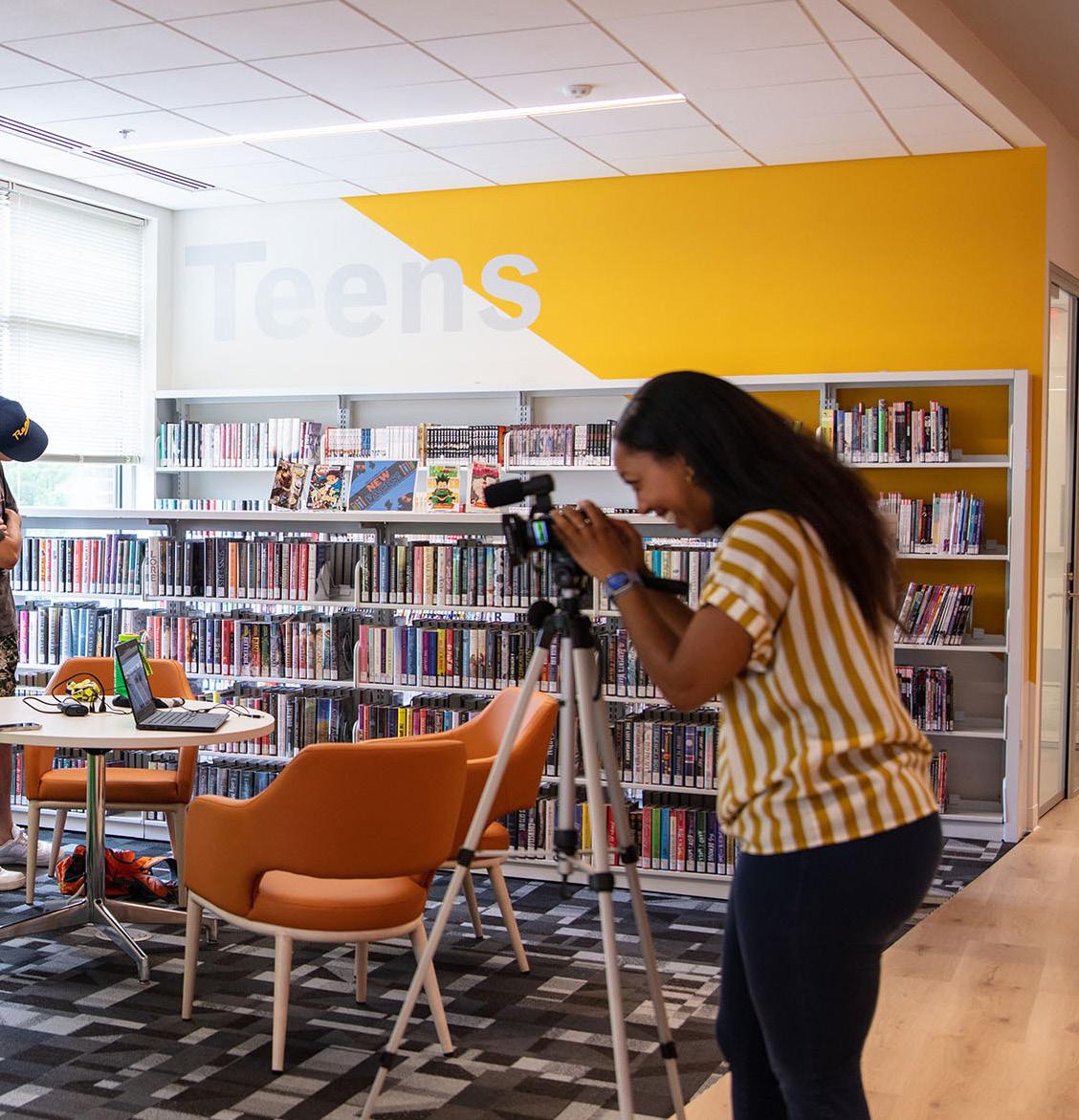
What stands out about Cybrarium and Park Central Library is the role that Homestead and Manassas Park wanted libraries to play in their communities. Rather than seeing the library as the
quiet mainstay of the city, they cast a vision for the next-generation of these assets. One in which their libraries can provide more than books, they provide a better quality of life for residents and a sense of place that sets them apart from other communities.
JUNE 2023 • COMMUNITYPLAYMAKER.COM | 17
Images Courtesy of Library Systems & Services

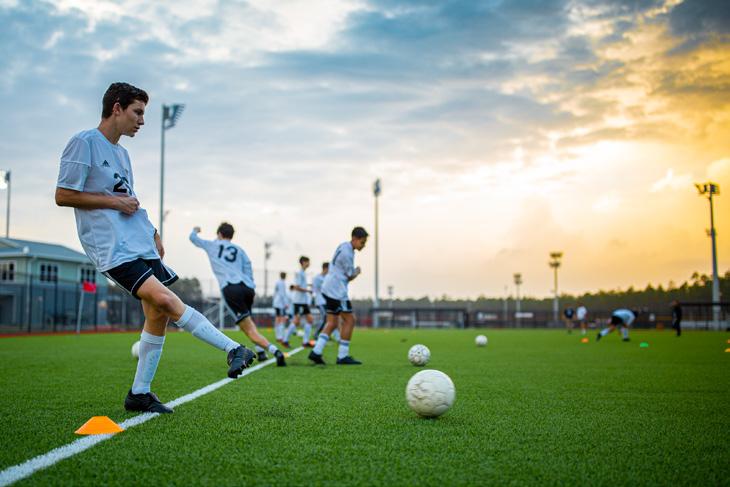
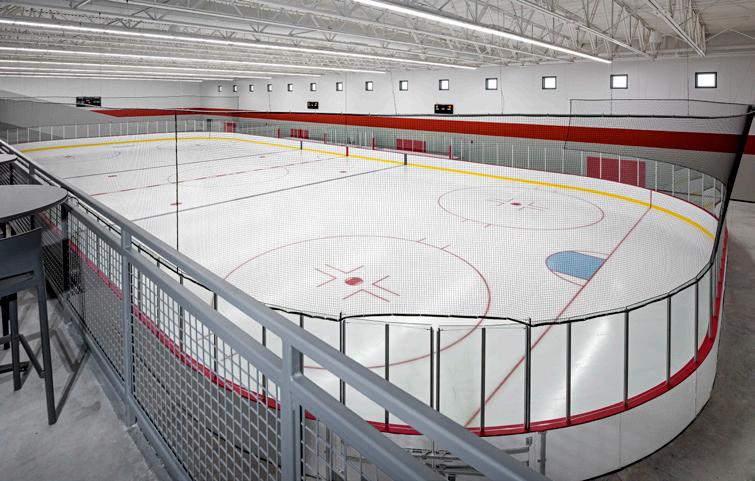
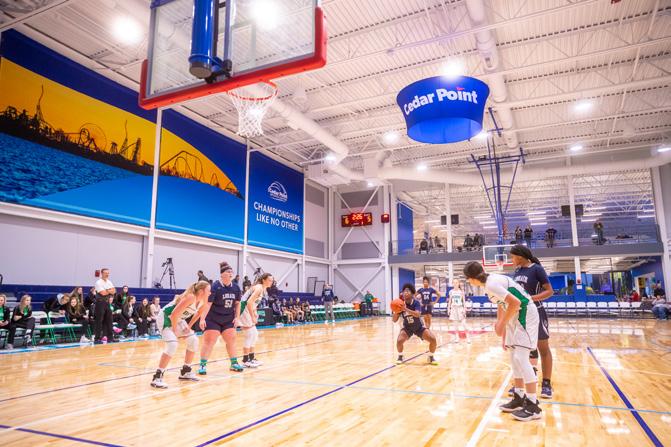
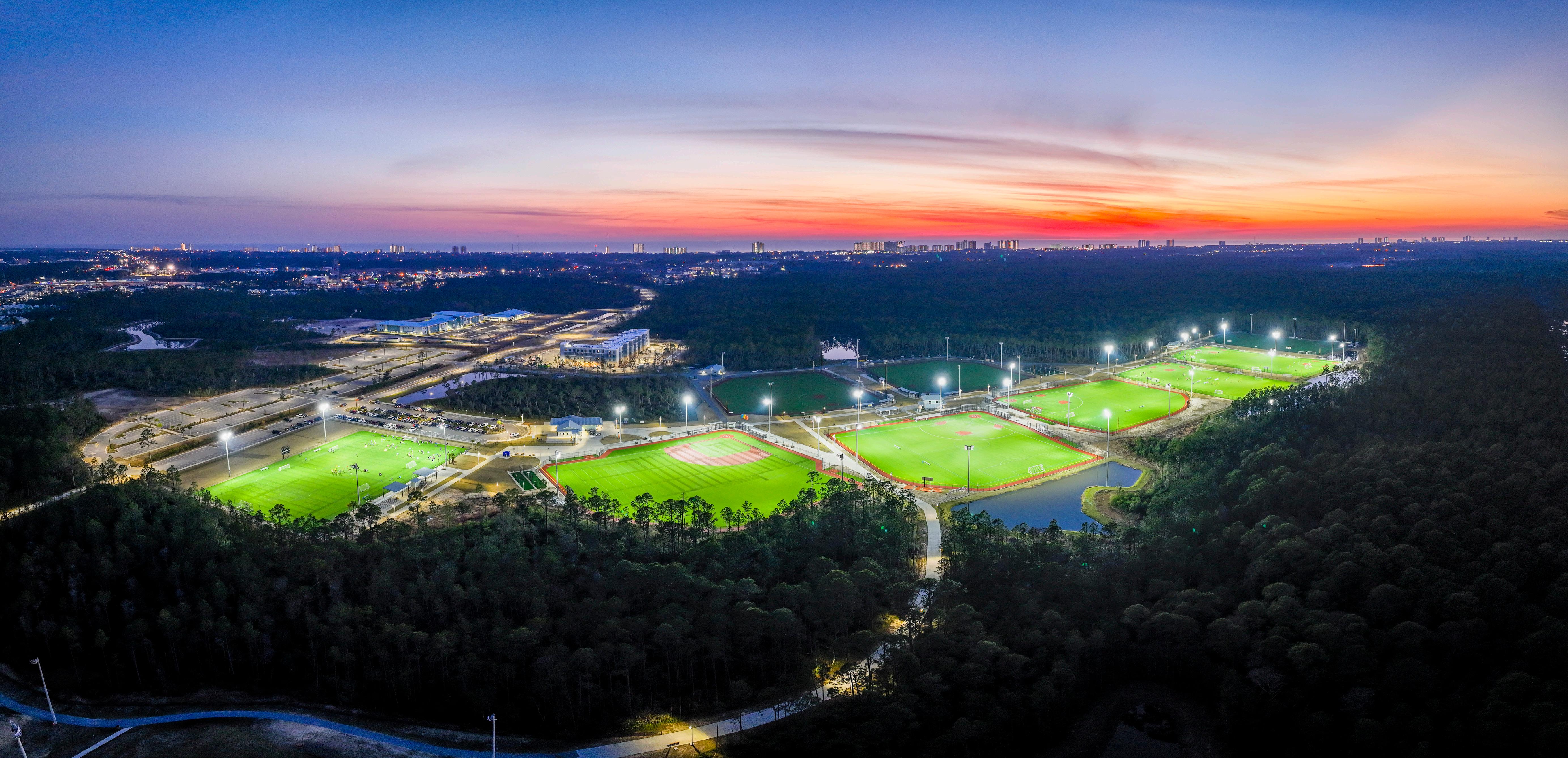
18 | COMMUNITYPLAYMAKER.COM • PUBLIX SPORTS PARK PANAMA CITY BEACH, FL
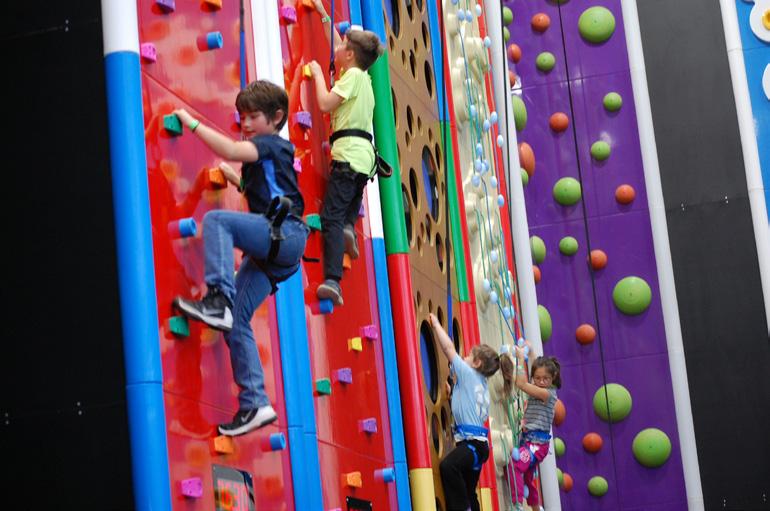
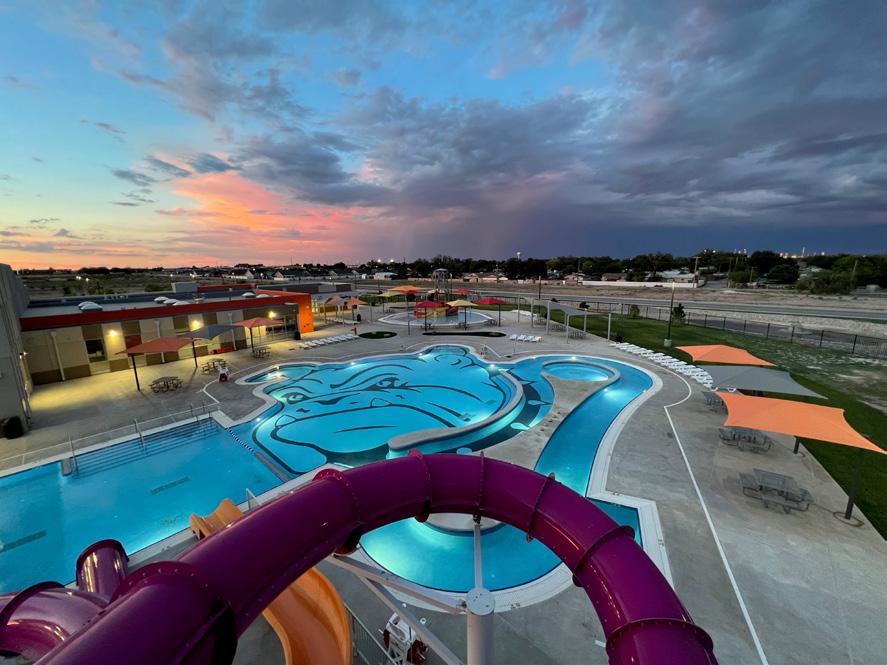
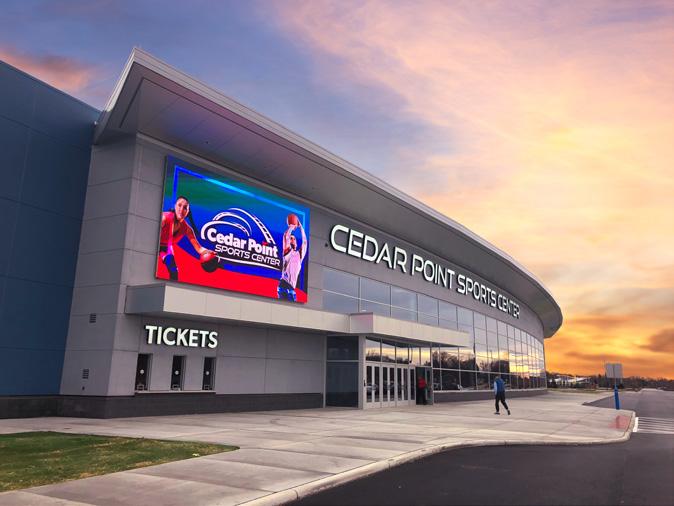
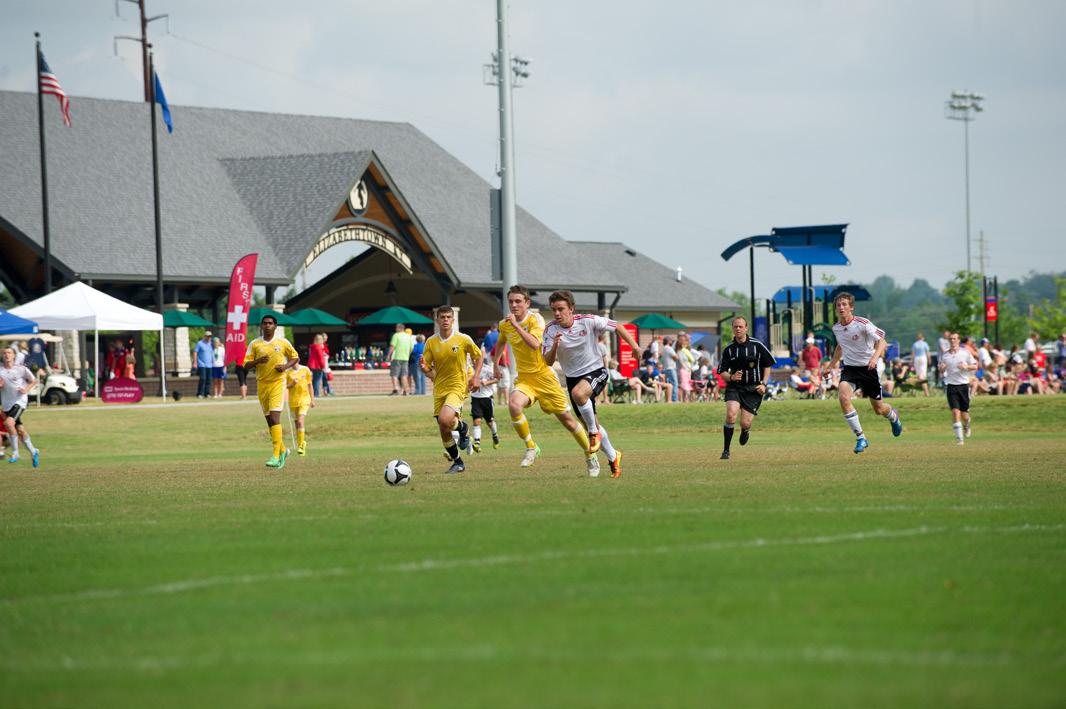

sportsfacilities.com Your Turn Key Solution For a game-changing sports and recreation destination.
INDUSTRIES INDUSTRIES
By Michael LoRé
To be nine hours from our small hometown and run into someone from Charlotte who had just been there for a baseball tournament,” Joe Shuttleworth said. “Small world.”
In his role as his city’s parks and recreation director, Shuttleworth is still getting used to the idea that Bridgeport, West Virginia is now a national travel sports destination. Their 160,000 square-foot sport and recreation mega-plex, the Bridge, opened in 2021.
That chance encounter continues to showcase the convergence of youth sports and sports tourism with local parks and recreation taking place throughout the United States, from rural communities to major metropolitan cities. When
families travel with their children for youth sports, they are not only exposed to new communities in their region, but
...the youth and amateur sports tourism industry was valued at $39.7 billion, a 320% increase from the $9.45 billion valuation in 2015.
SportsETA
the economic impact of their visit can also fund recreation offerings for local residents. Municipalities can rethink both the ways in which their parks and recreation departments serve to boost the health of their own residents, but how they can also consider partnerships that allow them to benefit from the fastgrowing sports tourism industry.
According to a 2021 Industry Report by the Sports Events and Travel Association (now called SportsETA), the youth and amateur sports tourism industry was valued at $39.7 billion, a 320% increase from the $9.45 billion valuation in 2015. That growth is expected to continue to skyrocket and reach $77.5 billion by 2026, according to Wintergreen Research Inc. In conjunction with that, local park and recreation agencies generated $218 billion in economic activity while
20 | COMMUNITYPLAYMAKER.COM • JUNE 2023
“
INDUSTRIES
THE Future of Parks & Recreation THE Future of Parks & Recreation
INDUSTRIESCOLLIDE COLLIDE
supporting more than 1.3 million jobs in 2019, according to a report from the National Recreation and Park Association (NRPA).
“What we’ve seen in the last ten years is this extraordinary explosion in the youth sports industry,” said Michael Kelly, former General Superintendent and CEO of the Chicago Park District and NRPA chair. “Big cities don’t have the land that suburbs or more rural areas do to build these megaplexes. Parents are going to these tournaments, seeing these facilities and their amenities, and they’re planning their vacations around their children’s youth sports schedule. It’s expanding a community’s opportunity to become a travel destination.”
Kelly, who now serves as executive vice president for the Sports Facilities
$91 . 8 B
Total Economic Impac t
$3 9.7 B
Direc t Spending Impac t
ECONOMIC IMPACTS SPORTS TOURISM
$1 2 .9 B
Total Tax Revenues
6 35 ,00 0
Total Jobs Generated
JUNE 2023 • COMMUNITYPLAYMAKER.COM | 21
Source: SportsETA.org
Companies (SFC), is seeing this convergence in real-time across their management portfolio of 40+ sports and recreation properties and 130+ active planning projects.
“There’s a collision between sports
complexes that go beyond traditional parks and recreation offerings and delve into the tourism space.
These new facilities not only offer extensive recreation programs and services to local community members but also
competition pool, a 40’x70’ configurable indoor turf field, fitness center, onequarter-mile walking track, indoor climbing, concessions, four laser-graded diamond fields, and a full-size, multipurpose outdoor artificial turf field. This facility would normally be considered
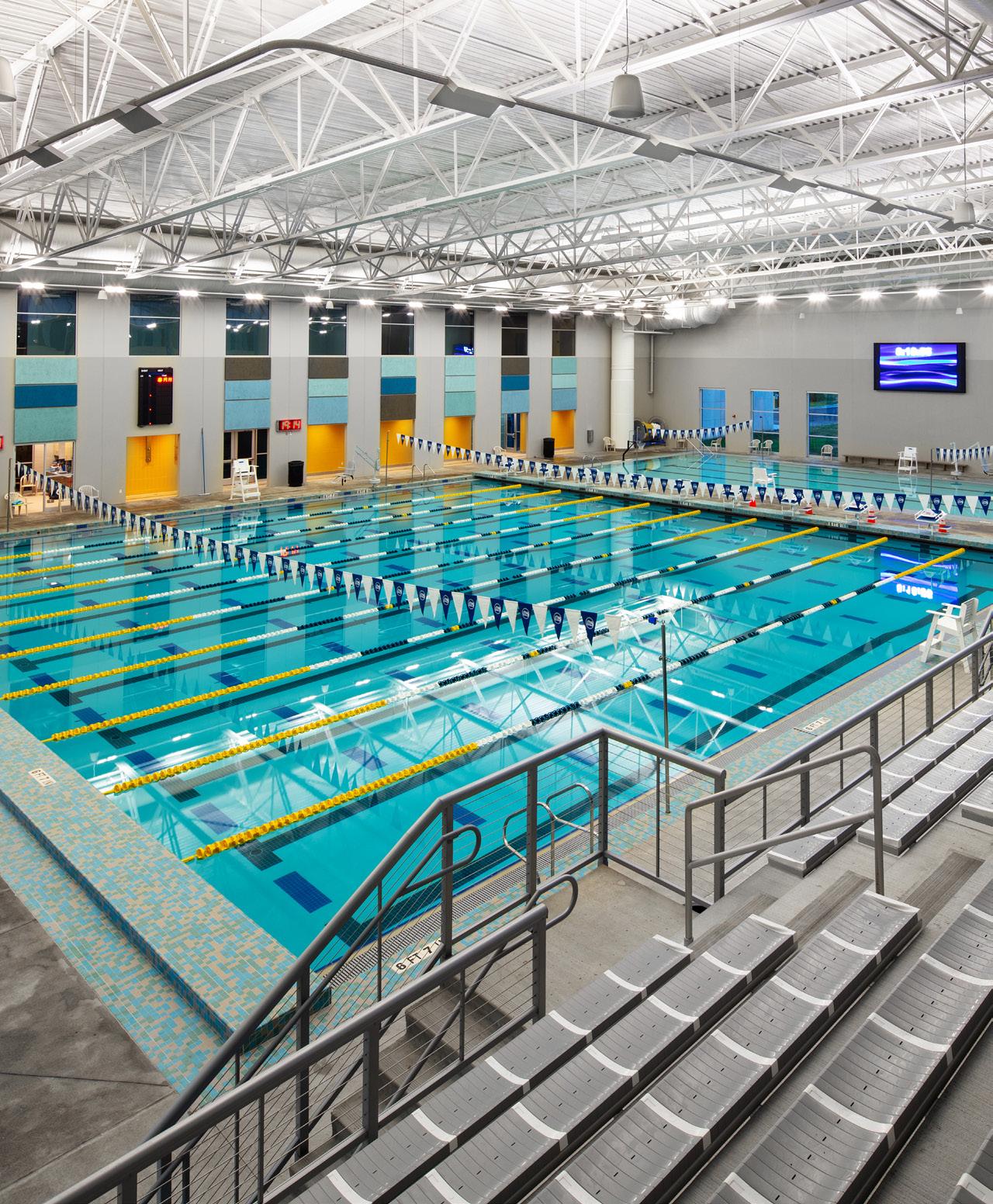
tourism and local recreation. You’re seeing a race among cities and suburban towns of all shapes and sizes to develop complexes as people are trying to find new, creative ways to boost their economies.”
Hundreds of communities across the country, like Bridgeport, West Virginia, are investing in multi-use, hybrid athletic
tap into the ever-growing sports tourism industry through large-scale tournaments to drive new tourism visitors, a role traditionally filled by a convention and visitors bureau. Opened in June 2021 for approximately $40 million, The Bridge Sports Complex boasts six basketball courts, a 25-meter by 25-yard
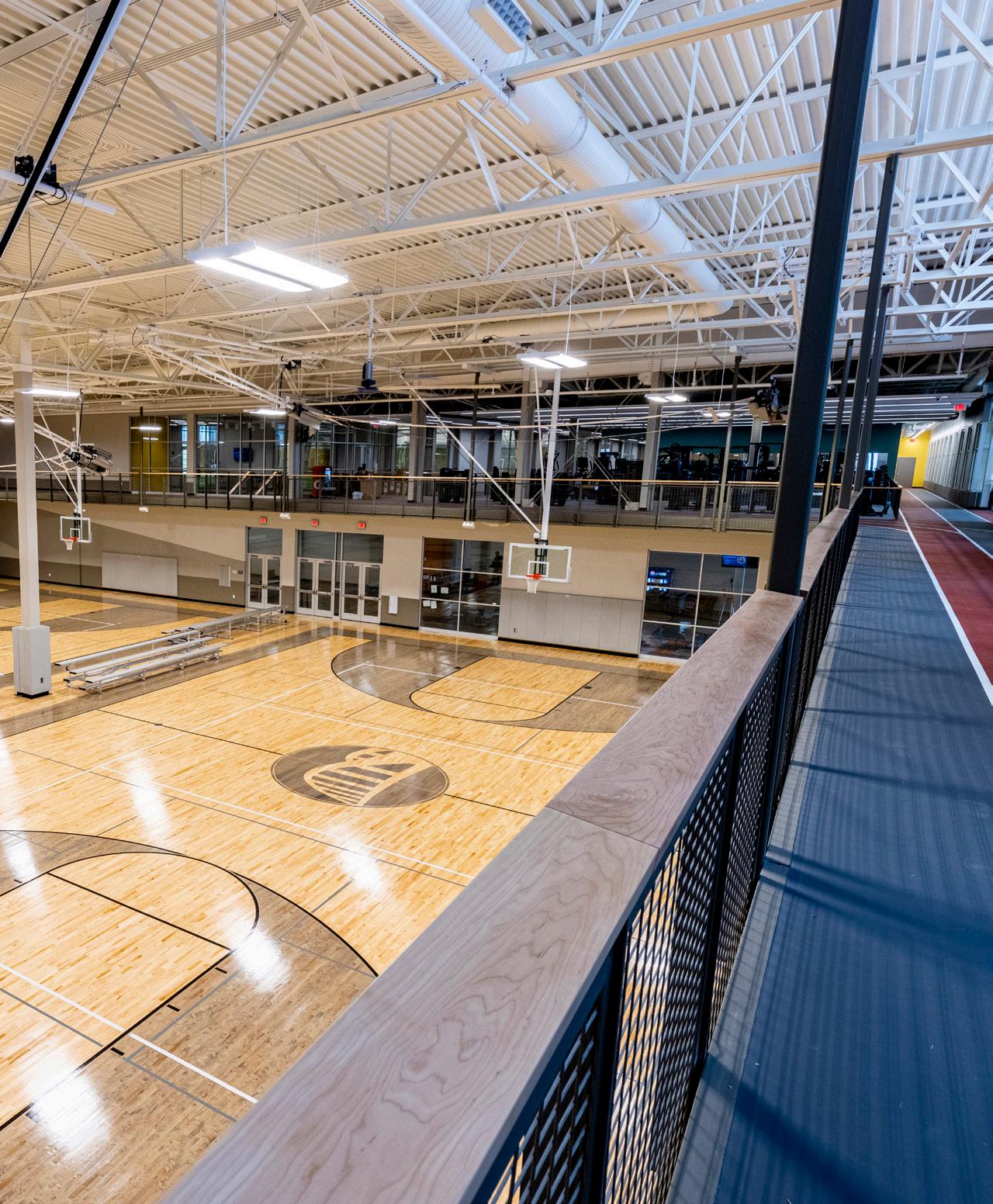
significantly overbuilt for a community with a population of less than 10,000, but sports tourism has shifted that paradigm.
“It’s truly become a game-changer for our area,” Shuttleworth said. “As the world and economies have tightened up over the past 20 years, we’ve [parks and
22 | COMMUNITYPLAYMAKER.COM • JUNE 2023
Six Indoor basketball courts, running track, and workout facility
Indoor 25-meter competition pool
Images courtesy of The Bridge Sports Complex
recreation] been pushed into developing more self-generated revenue that supports what we’re trying to do. Our sole purpose is to provide health, fitness, wellness, recreational, and outdoor opportunities to our local citizens. That’s the core of where we’re at, but this new model goes beyond that.”
“We have a lot of hotels, restaurants and shopping all within a three to four mile radius of our site. For those people traveling to our area for sports, we’re a very attractive location.” The collision of these industries is not lost on the city of Hoover, Alabama, which has become a pioneer in combining local recreation programming with sports tourism events in its $80 million indoor/outdoor megaplex. The property opened in 2017, and this past year generated $55 million in direct
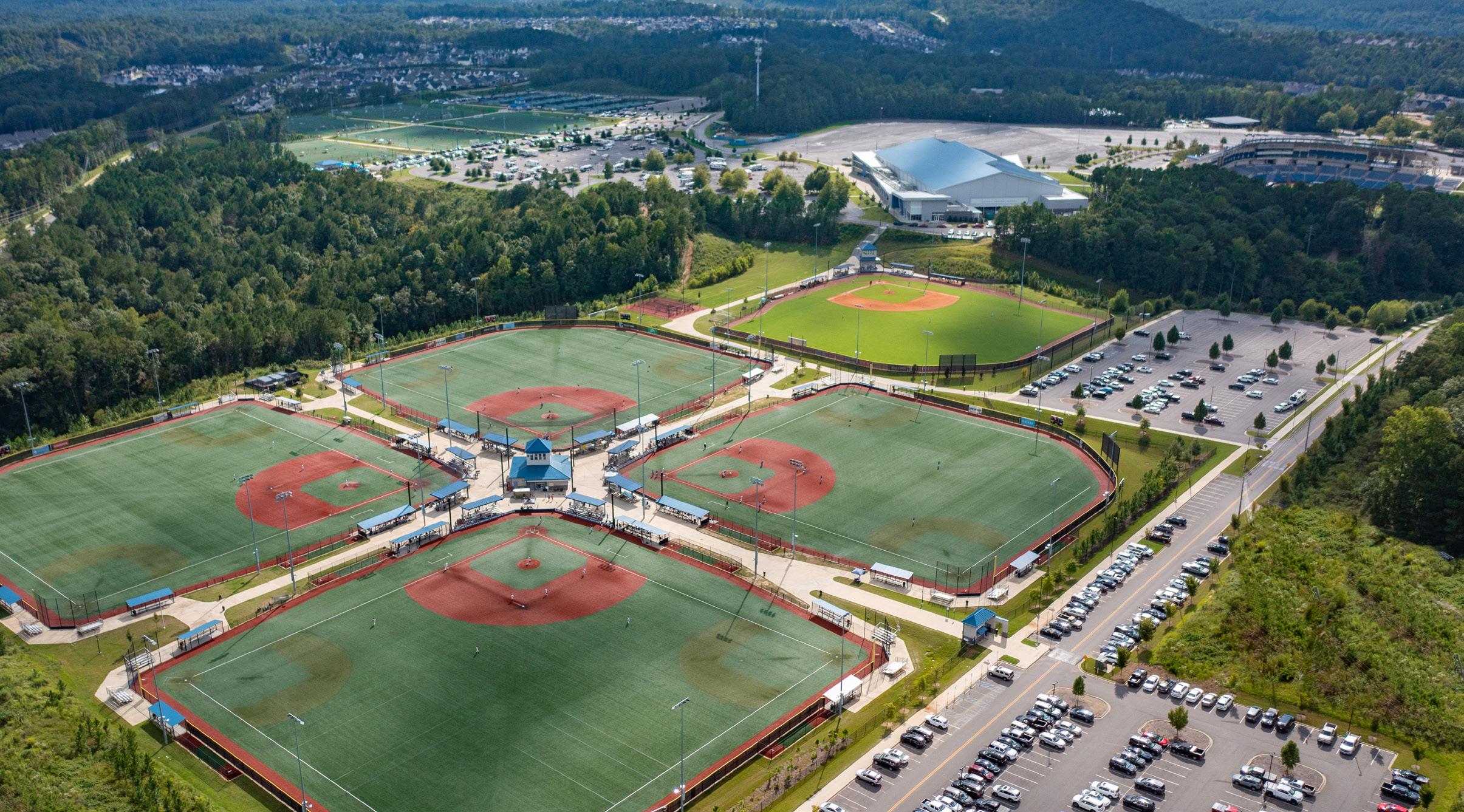
economic impact through sports tourism. It hosted more than 125,000 local participants for recreational sports and activities, including their free year-round
indoor walking track and ADA-accessible community splash pad and playground. Finding the balance between serving the local community while attracting new visitors through youth sports tourism is a delicate situation, and one that depends on a number of factors, including city/ town size, location, and resources.
“There is a huge balance,” Shuttleworth said. “It’s hard for a community our size to say, ‘Let’s spend $40 million and build this center that’s larger than a Walmart and staff it, put in world-class facilities, and offer it to our community without having some other avenue to create revenue that helps support the community operations of the facility.’”
“That balance to us—it’s difficult, and it’s one of those where we do our best to keep
JUNE 2023 • COMMUNITYPLAYMAKER.COM | 23
Last year, the property [Hoover Met Complex] generated $55 MILLION in direct economic impact through sports tourism...
Hoover Met Complex - Hoover, Alabama
Image Source: Hoover Met Complex
people happy and placated, but it doesn’t necessarily happen all the time.”
In larger cities like Los Angeles, Chicago, and Miami that lack the seemingly endless acres of green space to build these multisport complexes, the priorities are all about maximizing and improving current facilities and parks. For Mike Shull, the recently retired general manager of the Los Angeles Department of Recreation and Parks, the priority was replacing natural grass fields with synthetic turf, which requires less maintenance, as well as adding lights to many fields to keep them open later in a city where outdoor sports take place year-round.
Responsible for managing more than 450 parks throughout Los Angeles, Shull spearheaded the addition of 74 parks during his tenure. “I’m proud of adding all those new facilities, but if you ask me if it’s enough, it’s not even close,” Shull said. “You have to keep adding places to play and finding ways to add access. Parks aren’t looked at as critical infrastructure, and they should be. When you’re talking about police, fire, and waste management, parks and recreation need to be in the same conversation. You must have that conversation about parks in the same manner as you do these other pieces of what you’d consider in government as critical infrastructure...”
In 2021, the city received a $160 million investment from the LA28 Olympic and Paralympic Games Organizing Committee and the International
Olympic Committee to launch PlayLA, the single-largest commitment to youth sports development in California, to make sport more accessible to kids across LA ahead of the Olympic and Paralympic Games coming to the city in 2028.

“Our numbers have tripled, quadrupled in some places,” Shull said. “It all became very affordable. There’s really nothing that youth has to pay for. That in and of itself caused a good thing, which was increased participation. … It’s made and continues to make a significant difference here in LA.”
There’s no debating the positive impact parks and recreation have on local communities from small towns to major cities, but to embrace the next generation or to capitalize on the new ‘hybrid’ models that combine local recreation with travel sports, there needs to be increased partnership and understanding between government agencies. There’s also a need for increased collaboration between the public and private sectors to continue to provide these much-needed green spaces, facilities, and programs to communities throughout the country.
“Good business partnerships only work when there’s trust and understanding,” said Jack Kardys, former Director of Miami-Dade Parks, Recreation & Open Spaces Department. “Both sides can’t work in a silo toward their own end without prioritizing community benefit and community outcome. What a force multiplier when you bring the public and private sectors together to work on
Source: PlayLA - laparks.org/play-la
a problem. We would have never won WWII if we didn’t bring the private sector into the fold and harness it. This country is amazing in the way it works when it’s in a jam.”
“In government, we need to understand that the change isn’t just coming. It’s here,” Michael Kelly continued. “Consumer demand and preference, economics, and partnerships are all moving targets. If we want to serve our citizens, we need to lean in and be willing to embrace the change.”
24 | COMMUNITYPLAYMAKER.COM • JUNE 2023

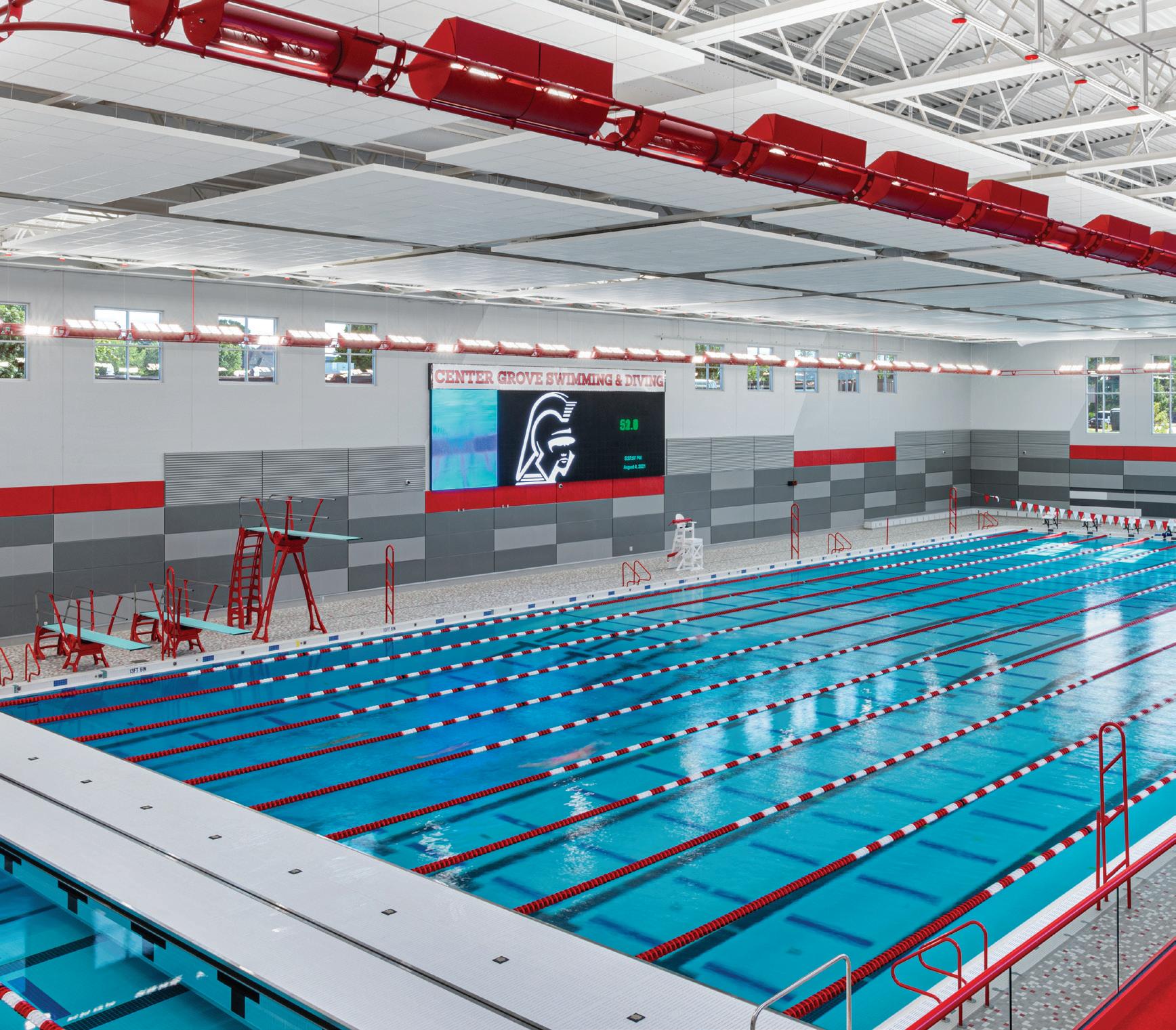
TEAMS AND TRENDS
INSIGHTS FROM SFIA’S U.S. TRENDS IN TEAM SPORTS REPORT
By Playmaker Staff
When the Sports & Fitness Industry Association (SFIA) released its most recent U.S. Trends in Team Sports Report, people put down their Starbucks and paid attention. After all, this was the first view of postpandemic sports participation. Was it up? Down? Running in place?
All of the above. While the results do not show a complete return to preCOVID-19 participation numbers, there were some gains, and an overall positive trend in participation. The number of participants in team sports grew over the course of 2021 to 68.3 million, up from the 2020 statistic of 67 million.
There’s still ground to be regained – since the high-water mark in 2019 was 70.8 million – but if growth continues there could be a complete return. It wouldn’t surprise
“Something we have seen writ large, is that the sports experience is a fundamental part of our national culture, family cadence, and individual passion. That is the thing that reassures me – we still have that positive attraction, and it translates into participation.”
The report turned up some interesting individual insights, but as Cove explains, when taken together, they paint a rich picture of the dynamic of sports in this country. Check out these insights, along with specific actions that you can take in your community.
Good News: More Kids are Playing
The number of team sports participants in the 6- to 12-year-old category grew

from 17 million to 17.6 million, marking the largest year-over-year increase in five years. But, says Cove, “The challenge is keeping them engaged.”
Playmaker Action:
Does your community have the facilities and programs needed to meet the rising demand and the changing consumer preferences? It might be time for an individual facility evaluation or a community wide recreation master plan.
Bad News: Teen Participation is Flat
Teens seemed to have reevaluated their sports commitments during the pandemic
26 | COMMUNITYPLAYMAKER.COM • JUNE 2023
Playmaker Trends
Tom Cove, SFIA’s President and CEO.
Image Source: Publix Sports Park - Michael Booini
MORE KIDS ARE PLAYING MORE KIDS ARE PLAYING
Ages 6-12 saw an increase in participation in team sports
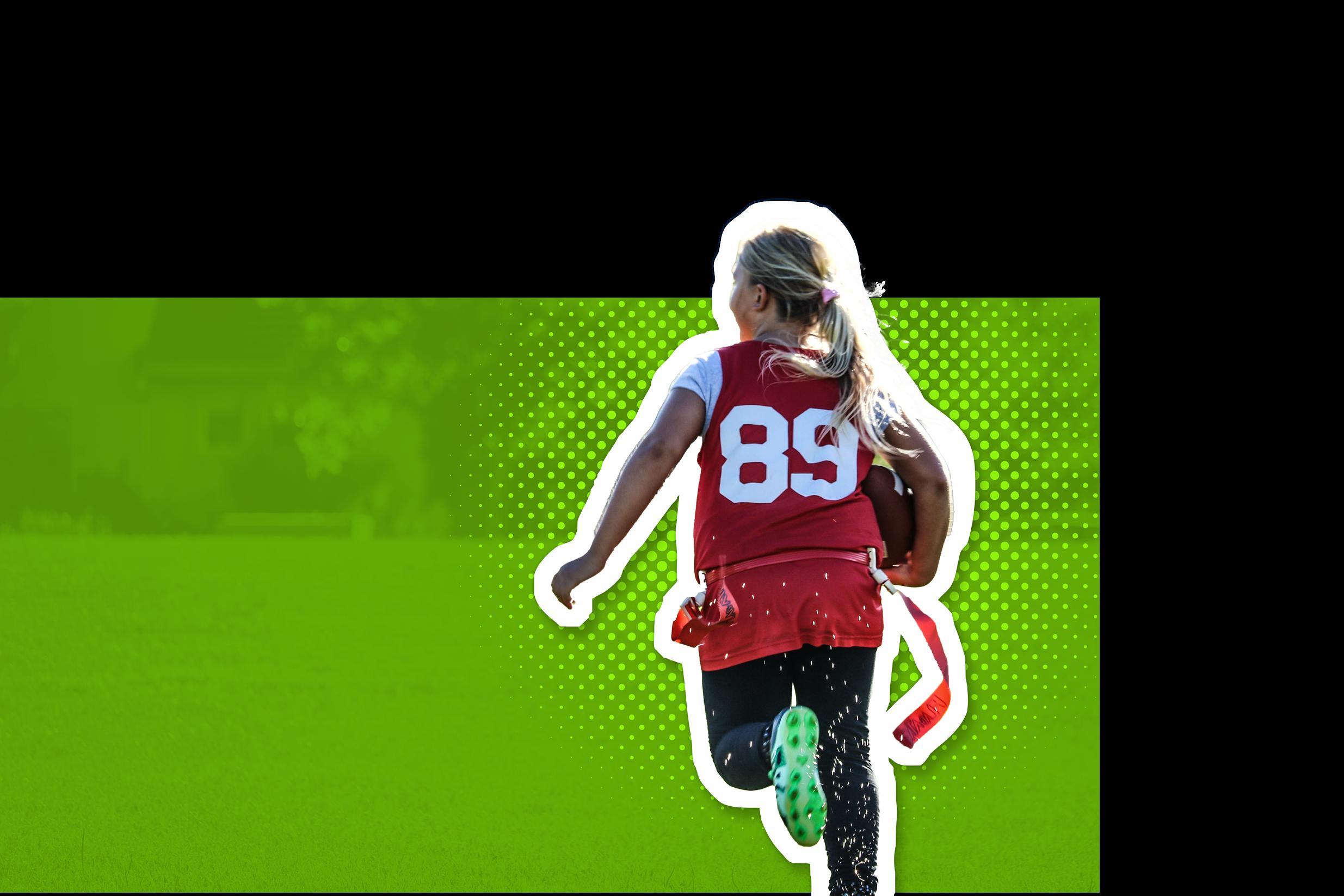

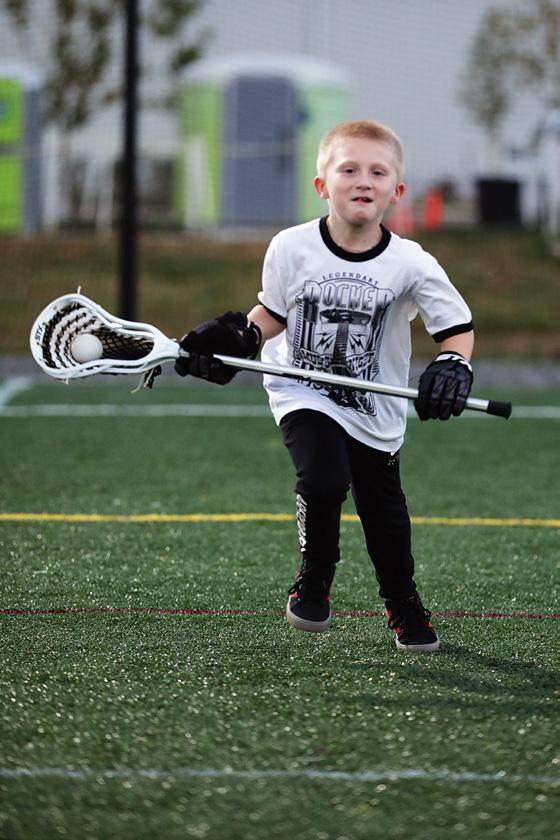


Basketball continues to be the highest played sport due to ease of access!

LET’S HEAR IT FOR THE
This may indicate that teens are trending towards risky behaviors
4%
GIRLS
For 13- to 17-year-old females, the sports with the largest five-year average annual growth were:
58% 61% 71%
27.1 million participants (2022) *source: “2022 Trends

68.3 million
2020-2021

The number of participants in team sports grew over the course of 2021 to 68.3 million, up from the 2020 statistic of 67 million.

JUNE 2023 • COMMUNITYPLAYMAKER.COM | 27
17M 2021 2022
17.6M
BASKETBALL IS KING PARTICIPATION TEEN
2018-19 to 2021-22
in Team Sports Report”
ICE HOCKEY TACKLE FOOTBALL FASTPITCH SOFTBALL
Playmaker Trends
and many did not return. This correlates with research by the National Federation of State High School Associations (NFHS), which reported their first participation decline in years.
Playmaker Action: According to a Fight Crime: Invest In Kids report, 2-6 p.m. are the hours in which youth are most at risk for committing juvenile crime. Studies show quality after school programs produce the best results for long-term crime prevention, increasing school attendance, improving test scores, and reducing drop-out rates. Partner with your parks department and private businesses to review your after school programs and employment opportunities for teens to prevent risky after school behavior for kids no longer engaged in sports.
Insight: Basketball is Big
The most-played sport is basketball, and Cove sees several factors at work here, the first being the flexibility of play formats. Basketball is really the only team sport that is consistently and regularly played on an informal basis, meaning you’ll see kids playing without any adults around, playing with older kids, in groups of boys and girls, playing two on two, three on three - or just shooting baskets by themselves. There is nothing odd about that, so kids aren’t self-conscious doing it.”
The other element in play, he notes, is the availability of facilities and the fact that the only equipment needed is a ball. “There are free and easily accessible courts everywhere, plus people can have portable hoops on their driveway so that family members can play.”
Playmaker Action: Consider the opportunity of sports tourism. By building amenities with 6-8 basketball courts, your community can more easily access indoor court time and can host regional or national tournaments that can produce $500,000 - $2 million in economic impact per court.
Soccer Reigns Among SixYear-Olds
“In the rest of the world,” says Cove, “soccer is like basketball; kids will just get together and play, and that kind of organic activity is fundamentally important to a sport’s growth. In this country, though, soccer is played with a coach or in a league.” For six-year-olds, soccer is the sport of choice, and the upcoming World Cups and Summer Olympics are expected to provide further runways to growth.
Playmaker Action: Partner with your parks and recreation director, facility management partner, or local club operators to ensure there are enough soccer programming opportunities for pre-k and kindergarten-aged children. Consider a market study to determine new build or expansion opportunities.
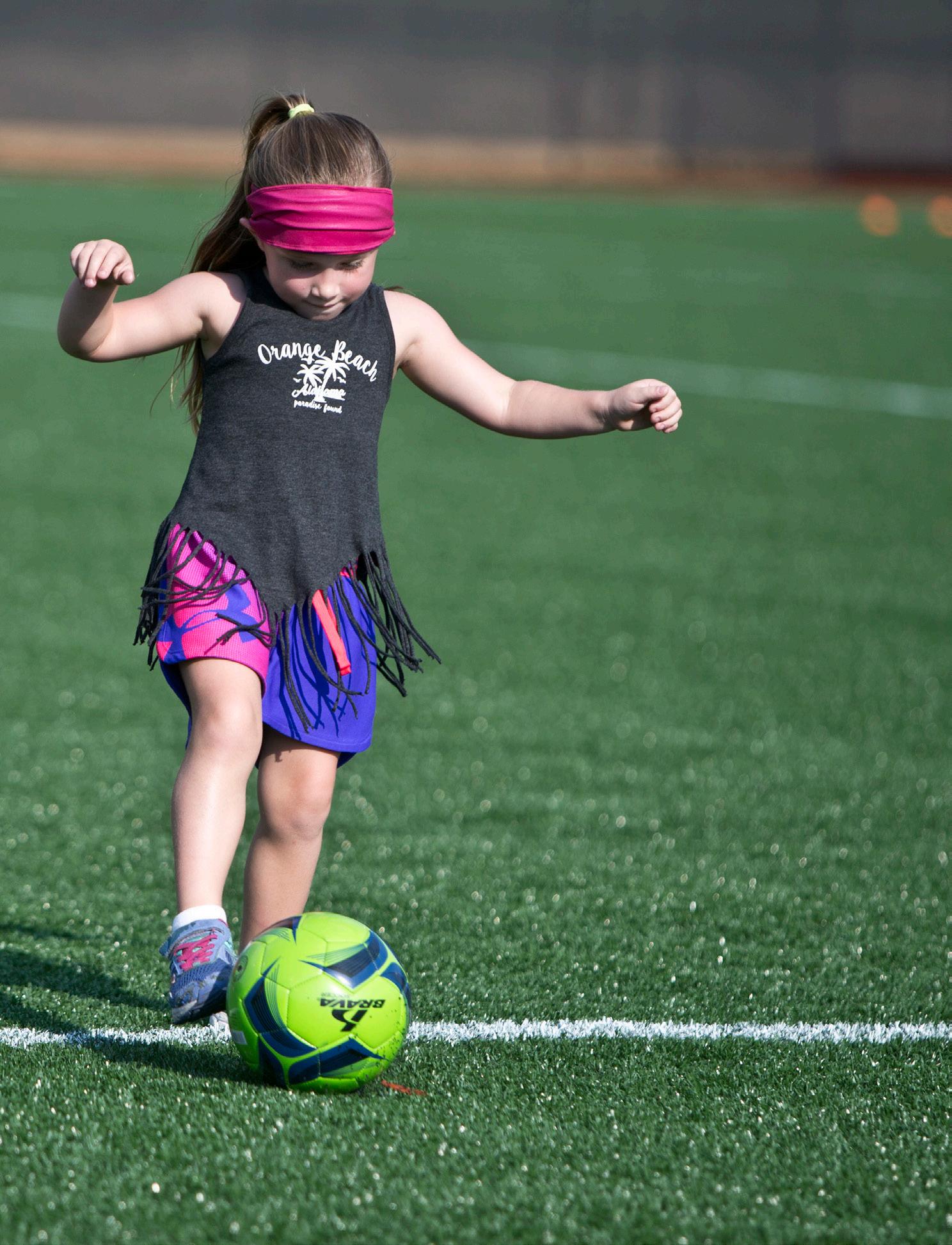
28 | COMMUNITYPLAYMAKER.COM • JUNE 2023
Image Source: Hoover Met Complex
A Continuing Trend to Keep An Eye On: Kids Specializing in One Sport
The report sees sport specialization as risky, since it often leads to burnout and to an exit from activity altogether. “Single sport specialization at an early age is working against a healthy overall youth system,” says Cove. “On one hand, the mildly gifted athlete who specializes will improve. However, for someone to tell the parents, ‘Oh, your kid has this great opportunity, and it could lead to a scholarship,’ well, that’s not really healthy advice. A kid who is great at something at age nine or ten could be in a completely different place six or seven years later.”
Playmaker Action:
Parks and recreation programs can offer great camps, clinics, and pickup leagues for children of all ages to sample different sports. Multisport summer camps are a highdemand, parent-favorite in many communities and provide sportsampling opportunities.
Great News: More Girls in Sports – Especially Football
The report found a continued rise in female participation overall. Across the five-year average annual growth, the activities among 6- to 12-year-old girls with the largest growth percentage were tackle football, flag football, and touch football. Tackle football also gained yardage among 13- to 17-year old girls. Flag is an emerging sport for women at the National Association of Intercollegiate Athletics (NAIA) and the National Junior College Athletic Association (NJCAA) levels as well, providing opportunities for the future.
“I strongly believe that 10 years from now, girls’ flag football will be an extremely well-developed part of the American sports experience,” says Cove, pointing to the continued popularity of the NFL and the presence of flag football at the 2022 World Games.
Playmaker Action: Encourage your parks department or sports complex operating partner to consider piloting a girl’s flag football league and embrace the trend in your community.
Adults Are Playing Too
Here’s a surprise: Participation among 18- to 24-year-olds is inching up. In some cases, this shift is propelled by college students participating in either club, intramural, or varsity sports; however, even after finishing high school or college, adults are finding their way into social leagues and organizations for kickball, softball, soccer, and more. Cove sees it as a natural progression.
“People grow up in sports and after graduation, they miss the social interaction. We believe this is huge, and it all goes back to the point of how important sports are in our lives.”
Playmaker Action: Get out there and get involved! From cutting the ribbon on opening day to throwing the first pitch, your local leadership voice paves the way for athletes of all ages.
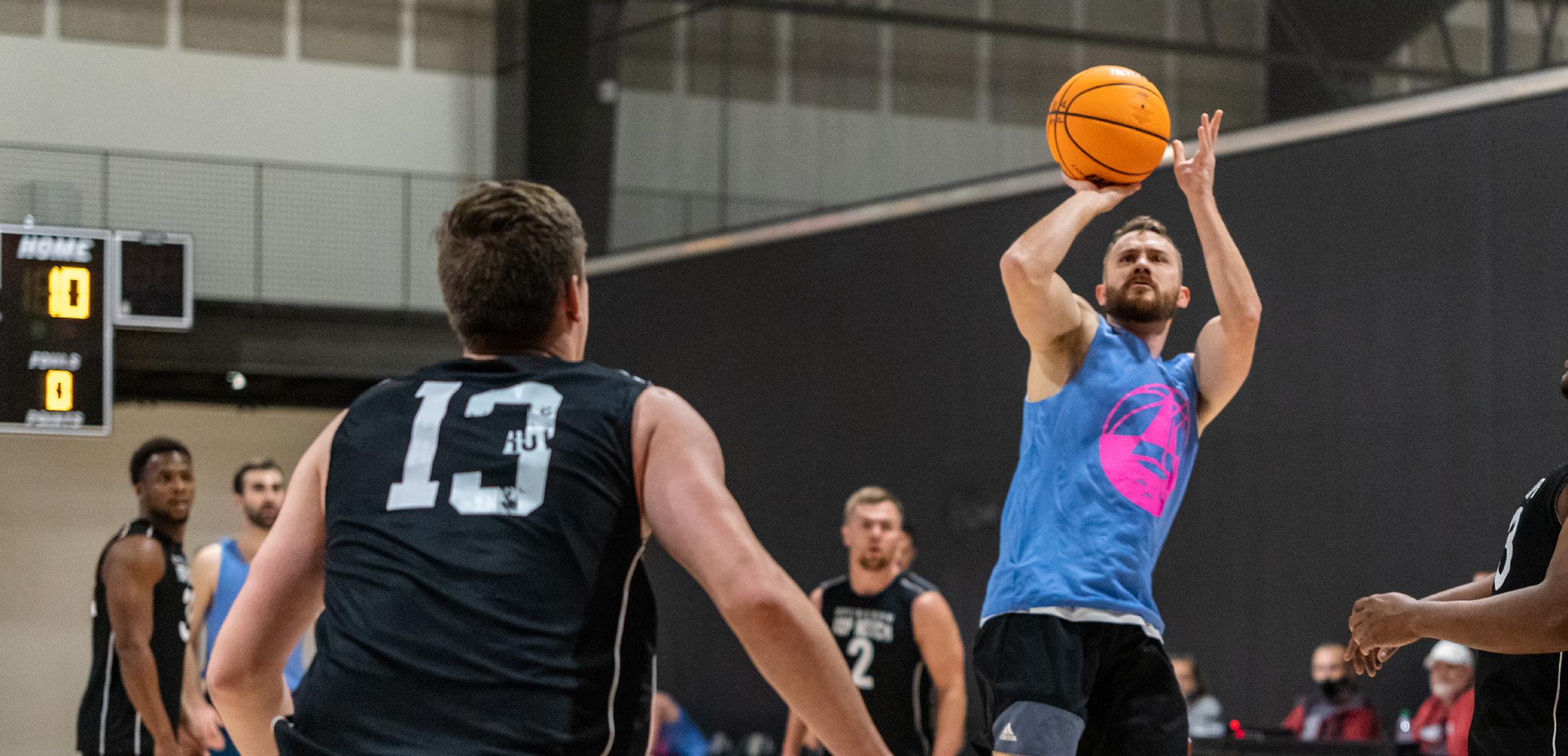
JUNE 2023 • COMMUNITYPLAYMAKER.COM | 29
Image Source: Sand Mountain Park and Amphitheater - SoFly Productions
SPORTS TOURISM AS AN ANCHOR FOR DEVELOPMENT
THE JOURNEY FROM DISTRESSED TO DESTINATION – DAYTON, TENNESSEE
By Playmaker Staff
Dayton, Tennessee. Located in the foothills of the Appalachian Mountains, this town could easily be forgotten. An impoverished area on the federal list of economically distressed communities.
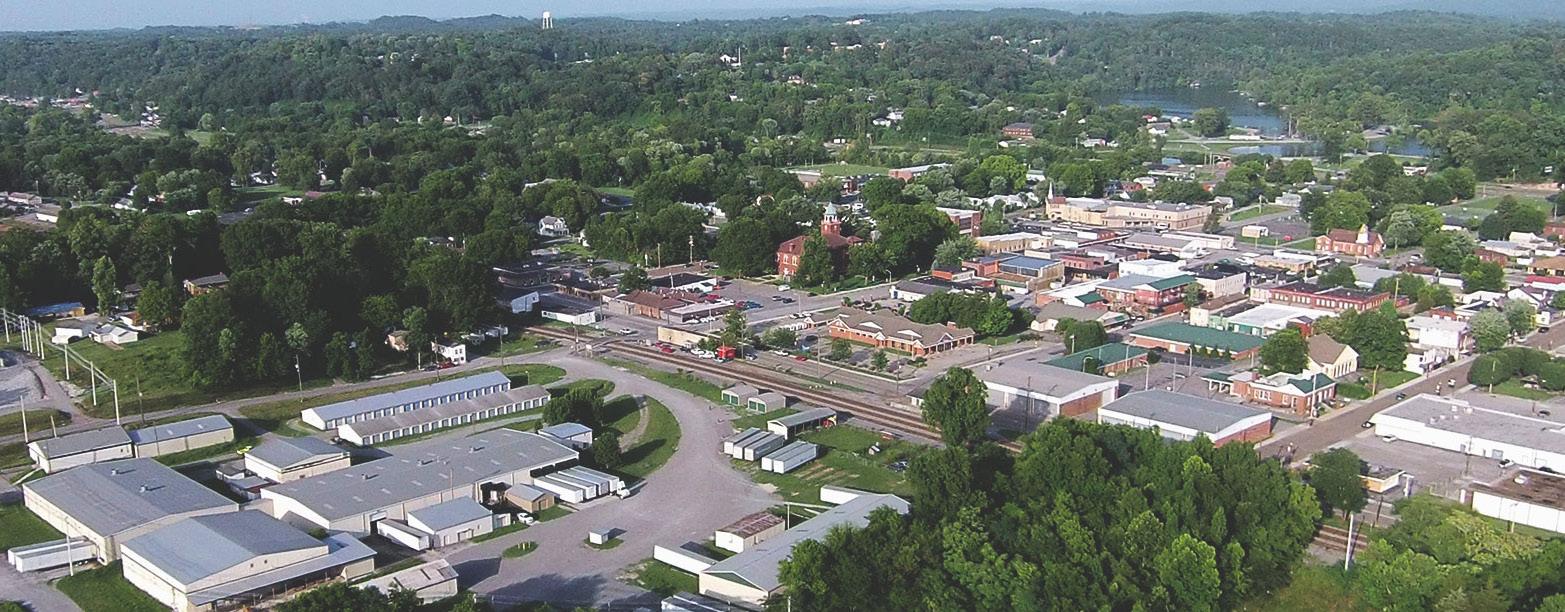
That is, if it weren’t for a man named Dennis Tumlin, who saw an opportunity in a great fishing hole and a proactive local government. Ten years ago, Tumlin was a salesman with Coca-Cola, living out of a suitcase. Despite his constant travel, he couldn’t escape a feeling of inertia. “It just became purposeless. I felt like there was a place I needed to be, somewhere I could do much more than just selling another soda.”
Travel enough in the Southeast and you’re bound to come across a bass fishing tournament. Tumlin, who also enjoyed fishing, came across plenty of them. And whenever he did, he noticed that stores in those areas needed more Coke
– more everything, in fact. “I thought, if this works in Eufaula, Alabama or in Okeechobee, Florida, wouldn’t it work in Dayton, my hometown?”
than Coca-Cola. One of the ideas that both Louallen and Tumlin considered was utilizing Lake Chickamauga and its absolute treasure trove of largemouth bass to draw visitors. According to a 2017 story in CBS News, Louallen said that he went to his council and asked them to trust him on this idea and that “fishing could really make it good for us.” From there, Tumlin called some contacts and in 2013, their first event, a Walmart FLW Tour, was held on “Lake Chick.”
It might have stayed merely an idea, except that around that time, Tumlin’s longtime friend, Gary Louallen, was elected mayor. Louallen asked Tumlin to come back home and help sell Dayton, rather
That one event resulted in an increase of $1.5 million in sales tax collected in Dayton. The next year, Dayton decided to go all-in on fishing. The destination hosted 33 fishing tournaments across 33 weekends. “We absolutely stepped on the gas. People were filling up hotels in a 45mile radius of Dayton,” said Tumlin.
Within 24 months, hotels, restaurants, and retail businesses were moving into town. Well-known names like Sleep Inn,
30 | COMMUNITYPLAYMAKER.COM • JUNE 2023
Community Development
Image Source: daytontn.net
By 2018, Dayton surpassed world famous Nashville as the leading hospitality sector in Tennessee.
The following businesses were established to serve Fish Dayton visitors:
Locally Owned:
Monkey Town Brewing Company
Carrabelle’s Banjo’s BBQ
Delia’s Mexican Restaurant
Screen Door Kitchen
Regional & Natl. Chains:
Waffle House
Zaxby’s
Burger King
Kentucky Fried chicken
Bojangles
Captain D’s
New Lodging Since 2013:
Bluewater Resort
PB Lodge
The Lake Lodge at Chickamauga
Sleep Inn & Suites
Econo Lodge
The Back Porch & The Lunker Lodge
Econo Lodge, Burger King, and KFC were coming to town along with a host of niche hotels and restaurants. Housing was booming. Popular fishing shows such as Ultimate Match Fishing were being filmed. Lake Chick was the hottest fishing spot around, and everyone wanted to cast a line. By 2018, Dayton surpassed world famous Nashville as the leading hospitality sector in Tennessee.
Tumlin then turned his sights to industrial opportunities. “Before, Dayton was too financially distressed to recruit industry. We didn’t have the reserves and appeal that
it took.” But, Finnish tire manufacturer Nokian Tyres was seeking a location for a new facility. Tumlin convinced the city council to purchase a piece of property for $4.2 million, since Nokian was looking for a shovel-ready site. “We went to the council and asked them to make this purchase on speculation only,” Tumlin blows out a breath. “And they did it.” The gamble paid off. Nokian chose Dayton and the new entity brought 400 new jobs to the area; this year, Nokian made a second investment that will result in another 75 jobs. Tumlin never returned to corporate America. He currently works with the Tennessee Department of Tourist Development, helping the state’s 95 counties, many of which have communities classified as at-risk or distressed. Dayton is no longer in that category, though. “Dayton has not been on the federal distressed list since 2016,” says Tumlin. “And it had been on that list for a very long time – more often on that list than off it. But, with the growth we’ve overseen, I don’t see it returning.”
John Bamber, executive director of the Rhea County Economic and Community Development Council, says that Dayton’s image as a fishing destination has enriched the community in ways that extend far beyond the lake. “It has been a catalyst for a great deal of expansion and placemaking, and I am very grateful for the many benefits that have sprung from the lake.”
Tumlin, who has been the boots on the ground for the entire arc of Dayton’s journey, says communities that want to create their own success stories need to have the vision and move forward.
“In the early days, when it was tough to measure success, we always had the naysayers and the nonbelievers. But when business started growing and hotels began building in the region, the results spoke for themselves, and everyone came to believe in the success of our efforts.”
2013-2021 OCCUPANCY TAX COLLECTIONS
62%
2013-2019 RETAIL SALES TAX COLLECTIONS
27%
2015 STATE RECORD FOR LARGEST BASS CAUGHT
15.3

GROWTH GROWTH POUNDS
JUNE 2023 • COMMUNITYPLAYMAKER.COM | 31
Professional angler Gabe Keen, from Dayton, Tennessee, holding the record- breaking bass caught on Lake Chickamauga.
Source: Richard Simms, www.ScenicCityFishing.com
COMBINING

32 | COMMUNITYPLAYMAKER.COM • JUNE 2023
From Myrtle Beach, South Carolina to Las Vegas, Nevada, municipalities once happy to host the occasional regional sports tournament are finding far greater ambitions can be pursued with the right partnerships. With an eye on potential new revenue and tourism, youth sports and community recreation resources can be transformed into assets that not only enhance the health of local residents, but also become an economic development and tourism engine for the city or county.
Public-private partnerships take shape in a variety of ways: publicly owned assets operated by professional management firms, publicly owned assets leased to private sports clubs or event providers, and private developers seeking public partnerships for land acquisition or funding support as part of a larger mixed-use development. This can be seen in the massive baseball complexes that for-profit company Big League Dreams develops and operates in Mansfield, California, and a few other locales. These partnerships are represented in the broader, state-of-the-art, sport, recreation, and event complexes operated by the Sports Facilities Companies (SFC) in places like Gatlinburg, Tennessee and Hoover, Alabama on behalf
of their municipal clients. It’s also seen through business arrangements helping to ensure economic impact in places where the goal once was simply to see the diamonds and courts used more often.
In the shadow of the Great Smoky Mountains, Morristown, Tennessee had been planning to develop a major multi-functional facility for years, for both local recreation, regional sports, and regional meetings. Plans and feasibility studies came and went. Ultimately, the city recognized that it could use help from the private sector.

“Morristown has been in need of a community rec center for decades,” said City Administrator Tony Cox. “When we started looking at the challenges of operating that facility, making sure what we had was the right thing for our community, it was over our heads.”
The city built Morristown Landing, a $30 million-complex with an aquatic center, four basketball courts/eight volleyball courts, and a conference center, using municipal bonds. Morristown hired SFC to operate the facility with a tax subsidy expected to run about $750,0000 a year initially. Morristown Landing opened in April of this year.
“They (SFC) have a depth of experience and people who’ve been there before. They have ideas of what’s worked and what hasn’t, and they were able to advise us on what the demand would be in terms of our community and the region,” Cox said. “Morristown Landing needs to generate tourism. It needs to support the quality
How the Next Generation of Sports Venues Benefits from Public/Private Partnerships
By Scott Michael Powers
JUNE 2023 • COMMUNITYPLAYMAKER.COM | 33
Image Source: Rocky Top Sports World
of life for our people. We need multiple things to happen at this facility,” Cox said.
Developers are seeing what the convention and visitors bureaus everywhere have been advocating to city councils forever: sporting events can have the same kind of economic impact for communities as theme parks and natural wonders. It’s a big economic impact, calling for bigger, more multi-functional facilities.

“Unlike what most cities or counties can do on their own, some of the privately built floor or turf sports complexes now are even putting together packages with the more traditional trimmings of tourism: hotels, restaurants and retail,” said Heather Gibson, a professor at the University of Florida’s Department of Tourism, Hospitality & Event Management.
“That’s been the big trend,” Gibson said. “The new private ventures are designed where you have the hotel sector with the event sector, with the food and other entertainment sectors.”
Before the COVID-19 pandemic, sports tourism was growing globally at an astonishing rate of about 14 percent per year and had reached the neighborhood of $600 billion in direct annual revenue,
according to research presented at the United Nations’ World Sports Tourism Congress held in Spain in 2021.
In Overland Park, Kansas, Price Brothers have created a mixed-use private development anchored by a massive 420,000 square foot indoor sports complex that will open in Spring 2024. Their liveplay-shop-dine development was partially funded by $49.3 million in Sales Tax and Revenue (STAR) bonds, “a financing tool that allows Kansas municipalities to issue bonds to finance the development of major commercial, entertainment, and tourism projects” according KansasCommerce.gov. The bonds are later paid off through sales tax generated by the development. In addition to the Advent Health Sports Park at Bluhawk, the development includes retail shops like Cosentino’s grocery and TJ Maxx clothiers, restaurants such as Red Door Grill and Whataburger, and wellness providers including eye care, chiropractic care, and veterinary services.
Gibson’s colleague at the University of Florida’s Department of Tourism, Hospitality & Event Management, Assistant Professor Nasim Binesh, offered that there are numerous benefits to communities partnering with for-profit companies for facility development or management. Niche businesses can bring specific resources, experience, and knowledge in areas such as marketing, sales, and event management. They may have national networks that allow them to negotiate better terms for any one venue, and access to more sponsorships, and other ways to commercialize events.
“It’s mostly because the municipalities and other organizations seek to maximize
revenue and to mini mize (ongoing-taxpay er) costs,” Binesh said.
Beyond that, Binesh said the professional companies are gen erating something many munici palities may not have provided in large part; analytics on managing venues. “It’s something that had been sorely lacking from a long time”, she said. “Now that it’s becoming more available, it’s changing the game.”
However, there are drawbacks to some for-profit partnerships, she cautioned. With thousands of new visitors playing on the weekends, community residents can feel they are losing access. Priorities can change and privatization can lead to fragmentation. Sometimes residents struggle to determine which public services are being supported by which private partners.
On the other hand, private development also can alleviate some of the risks that cities may face.
The same convention and visitors bureaus that have been pushing beaches and mountain trails are promoting the new breed of sports “mega-plexes” just as they might a theme park. Examples of these partnerships can be found in Panama City Beach, Florida and Gatlinburg, Tennessee. Cities are providing city-owned facilities to the private management companies, in exchange for flat fees of return. Beyond that, other consid erations include tax relief offered for land and tourism tax subsidies.
In 2017, Cedar Fair Entertainment Company, owner of the famed Cedar Point Amusement Park in Sandusky, Ohio opened a $24 million outdoor sports complex in partnership with Lake Erie Shores and Islands convention and

34 | COMMUNITYPLAYMAKER.COM • JUNE 2023
The same convention and visitors bureaus that have been pushing beaches and mountain trails are promoting the new breed of sports “mega-plexes”, just as they might a theme park.
visitors bureau and Erie County. The project was so successful, that in early 2020 the same team came together to open a $32 million, 145,000 square foot indoor facility with the additional partnership of Firelands Regional Medical Center.

While this is a for-profit business, the real goal is self-sustainability while maximizing economic impact through hotel room night bookings; a key driver from the County who assisted with the majority of the funding for the projects through a 2015 increase in Erie County bed tax. The facility has been recognized as a leader in the industry multiple times – as a Champion of Economic Impact award in 2017 (Sports Destination Management) and Corporate Investment and Community Impact “CiCi” Top 15 Community Impact award in 2021 (Trade & Industry Development).
“All of that is negotiable toward a broader city-oriented tourism marketing effort”,
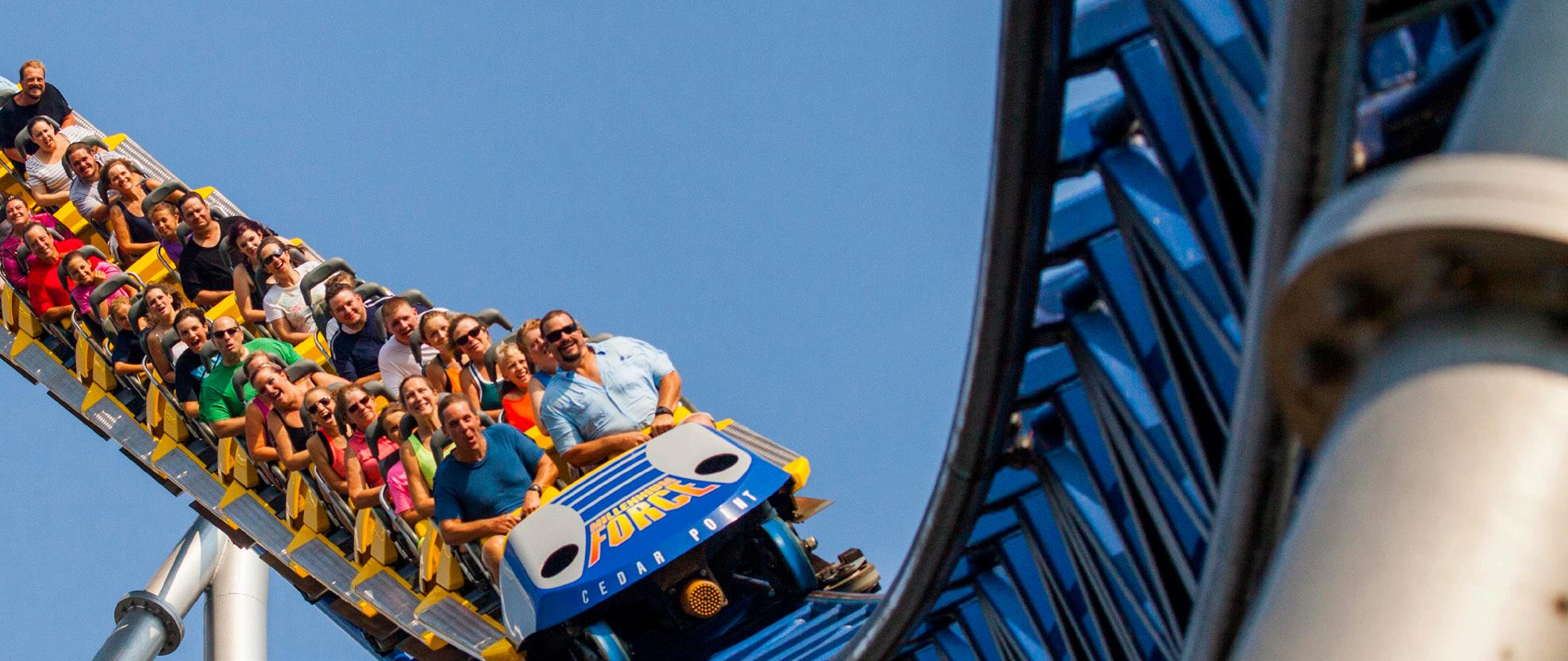
said Lisa Delpy Neirotti, associate professor of sport management at George Washington University.
“They’re taking the same business approach they have with the convention business, where most city convention centers are run by private organizations,” Delpy Neirotti said. “They have professionals running it that have best practices, economies of scale, and connections with tournaments.”
Seminole County, Florida is a centrally located suburban area that has invested heavily in youth sports tourism in the past decade. The county built a $30 million field sports venue named Boombah Sports Complex, and then leased much of its inventory to the for-profit baseball events company, Perfect Game. Seminole works with other partners to fill the rest of the schedule. “We really see sports tourism as a strong driver of tourism throughout the county,” said Danny Trosset, Seminole County’s Director of Sports Tourism.
From May, 2016, to October, 2022, Boombah hosted 350 events, 19,700 teams, and 841,000 visitors, he said. They accounted for 128,000 hotel room nights in the county.
“It’s a good agreement because they [Perfect Game] are driving a significant amount of visitation to our area. They’re filling our hotels just about every weekend with their teams,” Trosset said.
Traditionally, sports and recreation assets were mostly used by neighborhood kids and other citizens, however, they are now being purpose-built to drive economic impact for their communities as well. The importance of this dual responsibility has led many communities to turn to private operators. While this strategy is not undertaken lightly, with positive results in many parts of the country, these partnerships and the benefits realized will be around for a long time to come.
Image Source: Cedar Fair Entertainment Company
Image Source: Cedar Point Sports Center
FOUR PILLARS TO CITY IMPACT
HOW ONE OF THE NATION’S LARGEST PARKS AND RECREATION AGENCIES USED FOUR CORE TENANTS TO CHANGE LIVES
By Joe Bush
Through a decade as the CEO of one of the nation’s largest and most diverse park districts Mike Kelly had one North Star:
“My goal, and I think I was pretty successful at it, was trying to provide meaningful childhood experiences for kids across the city,” Kelly says 18 months after leaving the Chicago Park District (CPD), an organization he spent most of his life in. “I am a park and rec kid at heart.”
From his childhood on the south side of the city playing in park district leagues to a role as CPD in-house counsel and lobbyist, Kelly used deep institutional knowledge and his deeper bond with the city and its people to help CPD claim the industry’s highest honor in 2014, the National Recreation and Park Association Gold Medal.
During his tenure as CEO, Kelly wrangled a $500 million operating budget, 50 wards, 77 neighborhoods, over 600 parks, a zoo, the stadium that hosts Chicago Bears games and major concerts, 12 museums, 26 miles of lakefront, over 500 playgrounds, two conservatories, and 9,000 acres of parkland.
CPD was a finalist for the NRPA gold in 2019 and 2021 as well. That’s more impressive when you know that once a park district wins the gold medal it can’t reapply for five years.
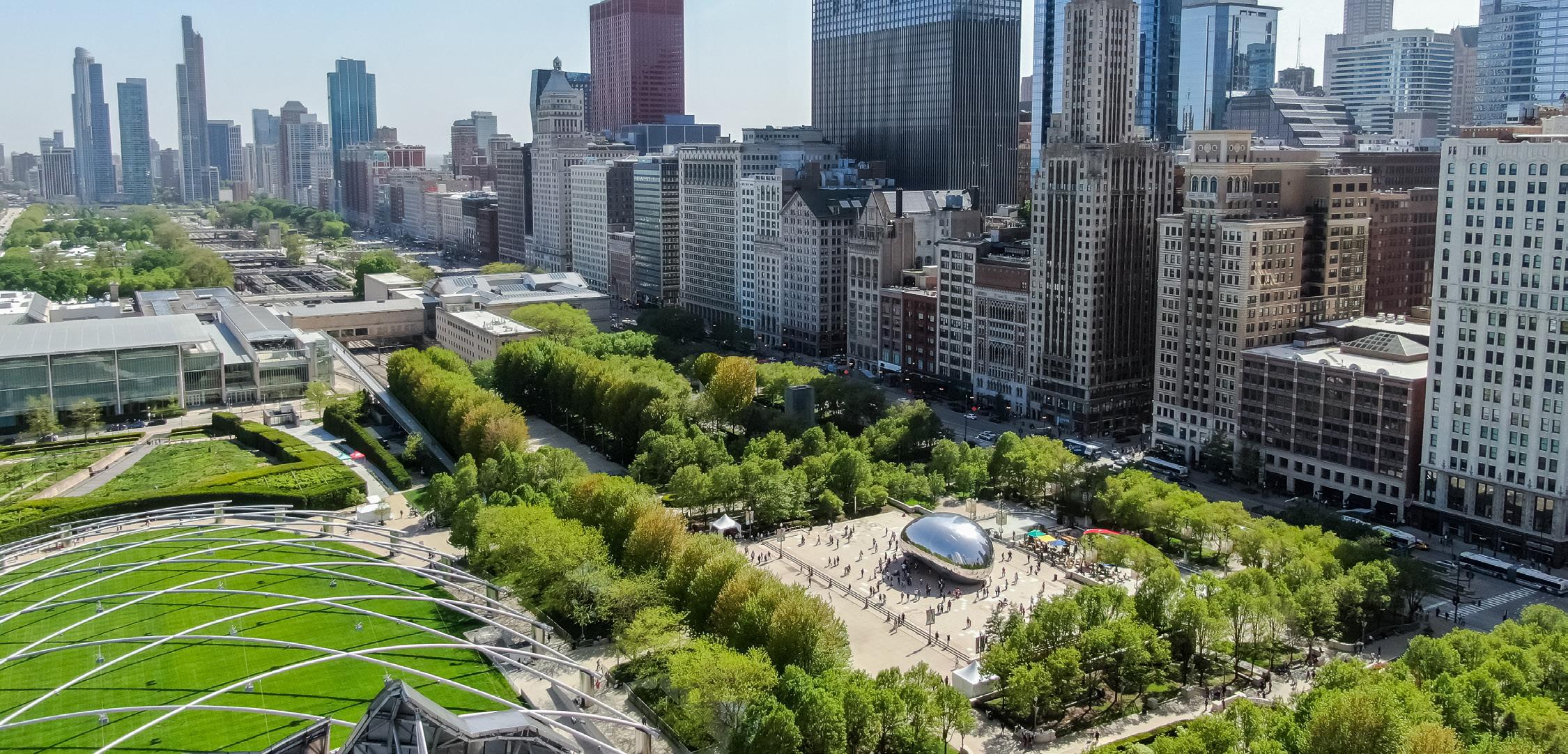
Yet, Kelly chooses one metric as his highest achievement.
“Pre-COVID-19, we broke our programming registration numbers year over year,” Kelly says. “By the end we were registering
“...we broke our programming registration numbers year over year,” Kelly says.
100,000 kids per quarter in our programs and we were probably serving another 100,000 per quarter indirectly through private leagues, AYSO soccer leagues, private little leagues, and church leagues. I’m probably as proud of that as anything we accomplished.”
36 | COMMUNITYPLAYMAKER.COM • JUNE 2023
Community Operations
Image Source: Adobe Stock
In a December 9, 2014 event at the City Club of Chicago, then-Chicago Mayor Rahm Emanuel boasted of the summer reading program started at park district camps and the coordinated reading efforts among the city’s libraries, cultural events centers, and the park district.
Emanuel, who appointed Kelly to the top CPD post in 2011, blended the discussion of the reading program for kids with the park district’s role as one of the city’s top employers of teens as two examples of the park district’s impact on city culture as well as advancement among its youth.
“It underscores the role the park district plays in the fabric of our city,” Emmanuel said at the event, “When you think about our neighborhoods and communities in Chicago, what an important role our neighborhood libraries and our parks play in the fabric of establishing and making sure a neighborhood and community have vibrancy and lifeblood.”
“Whether it’s a playground, a park, or the programming going on at our park district, Mike Kelly has led this park district to the 21st century.”
According to Kelly, a key part of this effort was implementing the CPD’s first strategic plan in 20 years. The plan had four pillars that could easily double as mission statements for the district: Children First, Best Deal in Town, Built to Last, and Extra Effort.
Children First:
“It’s not that we don’t care about seniors, it’s not that we don’t care about adults, but we pivoted to putting children first,” Kelly says. “When you think about that, it impacts your day-to-day decision making.”
Best Deal in Town:
“We’ll measure our success by the number of kids that come through our doors,” says Kelly. “We will never turn a child away for an inability to pay.”
To satisfy that pursuit, Kelly and his team focused on strong fiscal management rather than massive fee increases and tax hikes. The result was increases in non-tax revenue from events like Lollapalooza, Riot Fest, and many other festivals and concerts while property taxes rose just four times in fifteen years.
Built to Last:
Parks such as Northerly Island, Maggie Daley Park, the 31st Street Harbor, the 606, the Lakefront Trail Separation project, Ellis Park, La Villita, the 312, the Gately Track and Field Center, the future Park District Headquarters in Brighton
Park, and the under-construction Obama Presidential Center all became realities under Kelly.
His CPD administration also spearheaded the “Chicago Plays” program which saw the largest playground renovation program of its kind in Chicago and the United States.
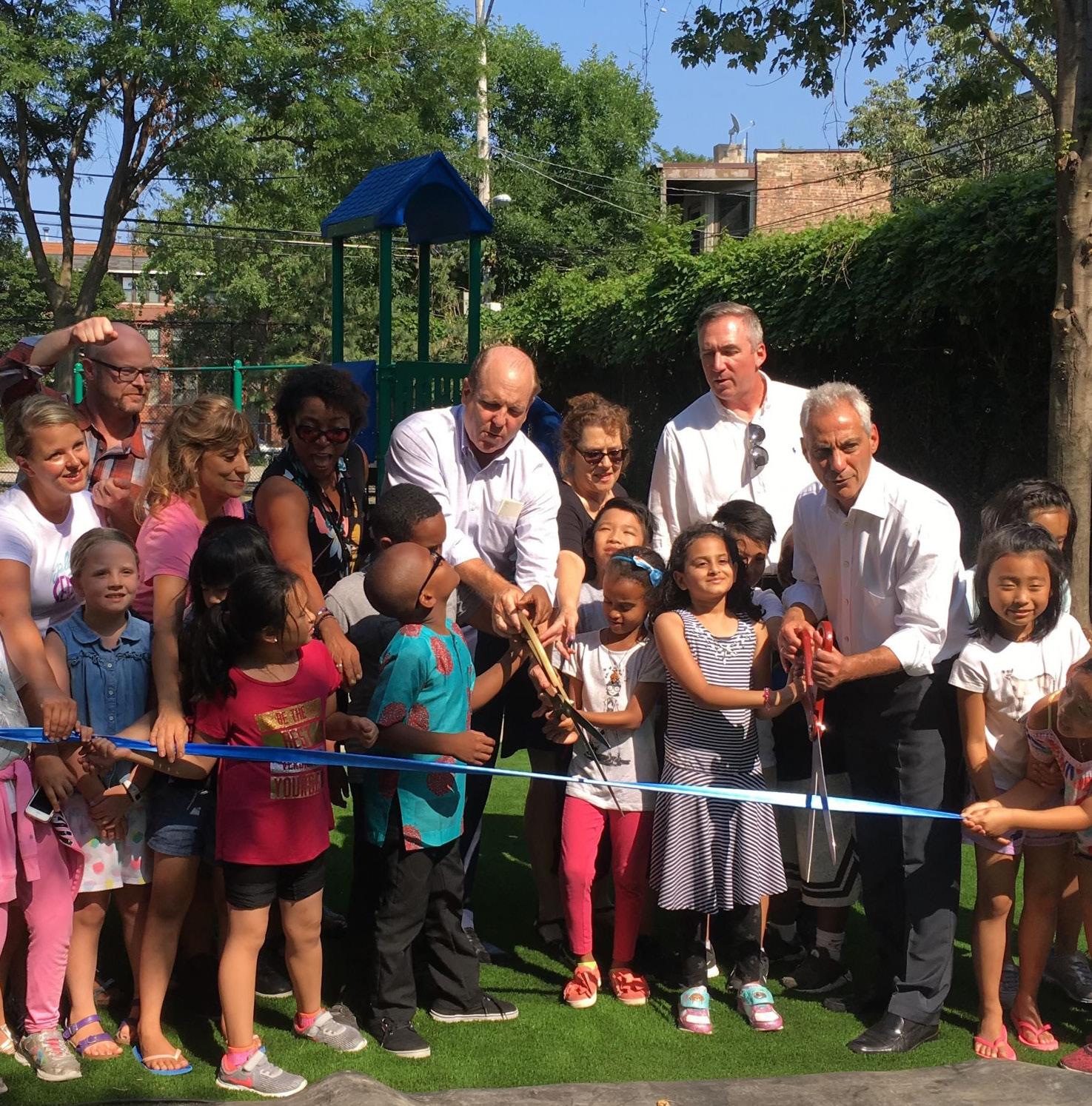
“You have to be creative and you have to be relentless,” Kelly says of capital improvements. “To be successful in the park and rec business, and especially in the big cities, you have to be relentless in your passion to make a difference and you have to be relentless in looking for solutions and resources to solve those problems. You have to be.”
Extra Effort:
CPD invested in IT, training, and pro -
JUNE 2023 • COMMUNITYPLAYMAKER.COM | 37
Image Source: Mike Kelly
fessional development and certifications, and today the agency boasts more certified park professionals than any other park agency in the country. Kelly says his creation of a department of workforce development was crucial.
The department has a director, and a cadre of employees that were mainly trainers, whose job is to train employees in best practices, to conduct the training sessions, and to help continuing education units through the NRPA.
CPD is accredited for standards of excellence in quality and efficiency by the National Commission for Accreditation of Park and Recreation Agencies as well as being recognized as a Distinguished Accredited Agency in the State of Illinois. CPD also began partnering with Chicago Children’s Advocacy Center to implement best practices to protect children.
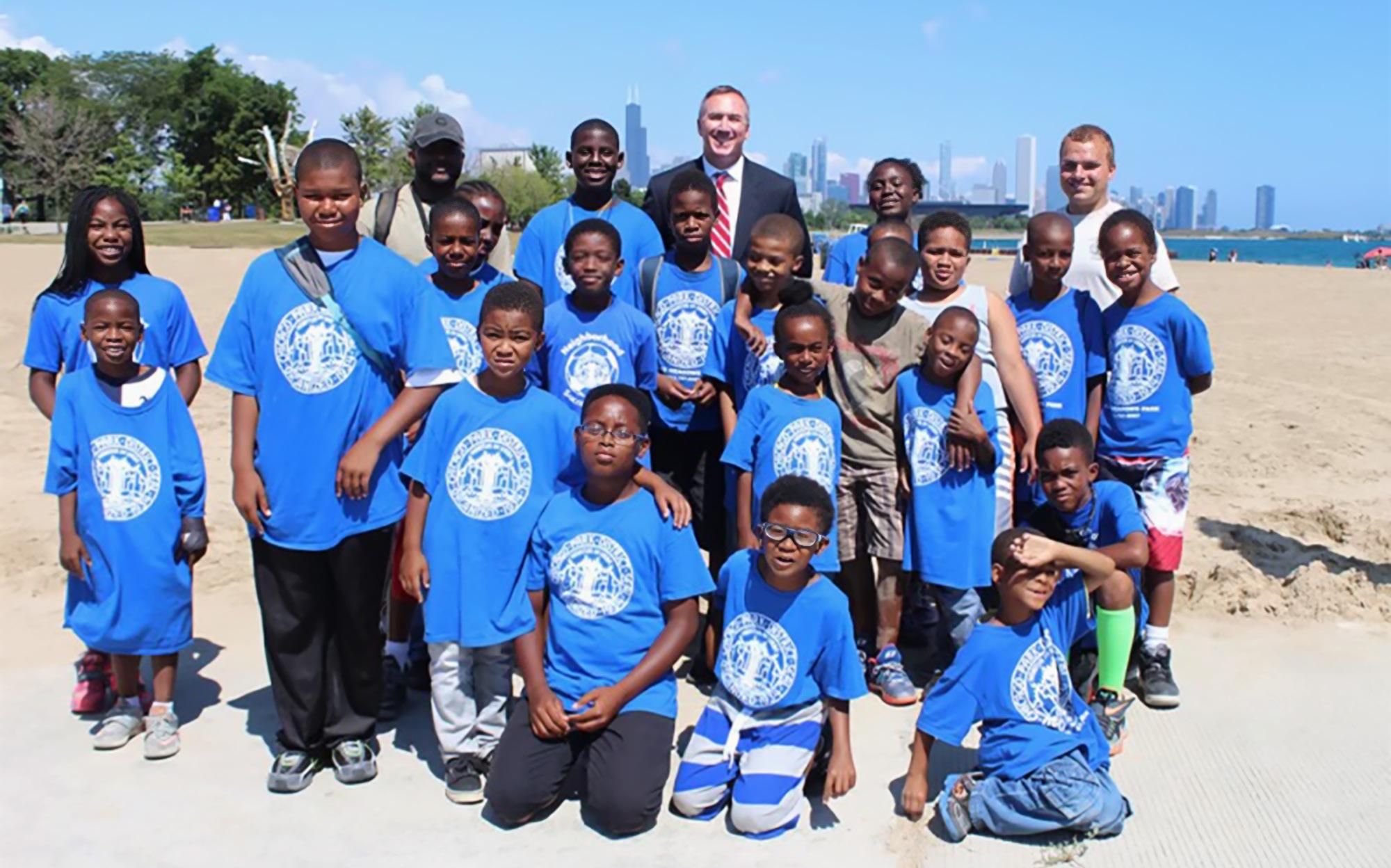
“That was all about re-investing in your people,” Kelly says of the workforce department genesis. Kelly knows his experience with one of the largest U.S. cities is mostly relatable to
other large cities but also knows some tenets of parks and recreation management translate no matter the scale.
Kelly is proud that he had relationships with leaders of the 26 unions that CPD employees were in, that he visited every one of the city’s neighborhoods to dialogue in person about what the communities wanted, and how CPD and the community could collaborate to meet their needs.
“Know your communities, know your team,” says the self-proclaimed ‘park and rec’ kid. “Try to put each employee in the best position to succeed. Know your blind spots and fill those blind spots with quality people. Don’t be afraid to hire people smarter than you, that’s half the battle. Exercise common sense and communication at all times, with each other, with the field, and with the community.”

38 | COMMUNITYPLAYMAKER.COM • JUNE 2023
“To be successful in the park and rec business, and especially in the big cities, you have to be relentless in your passion to make a difference...”
Mike Kelly
Images Courtesy of Mike Kelly
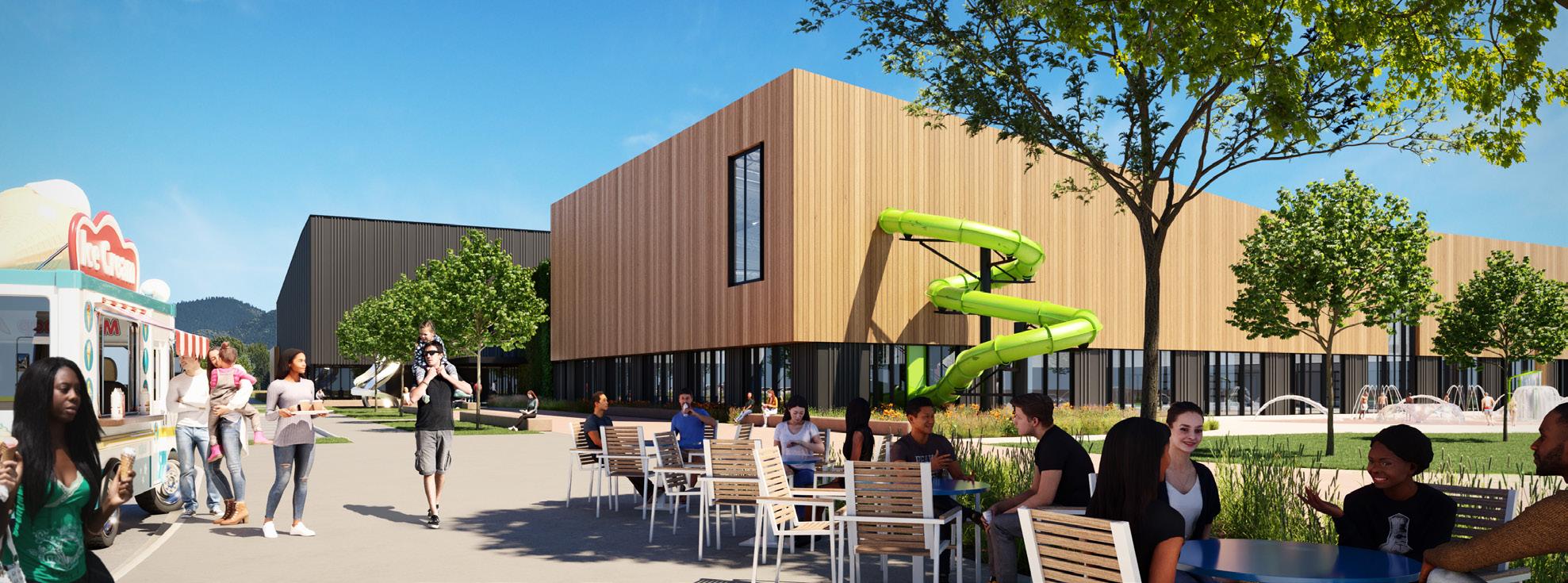
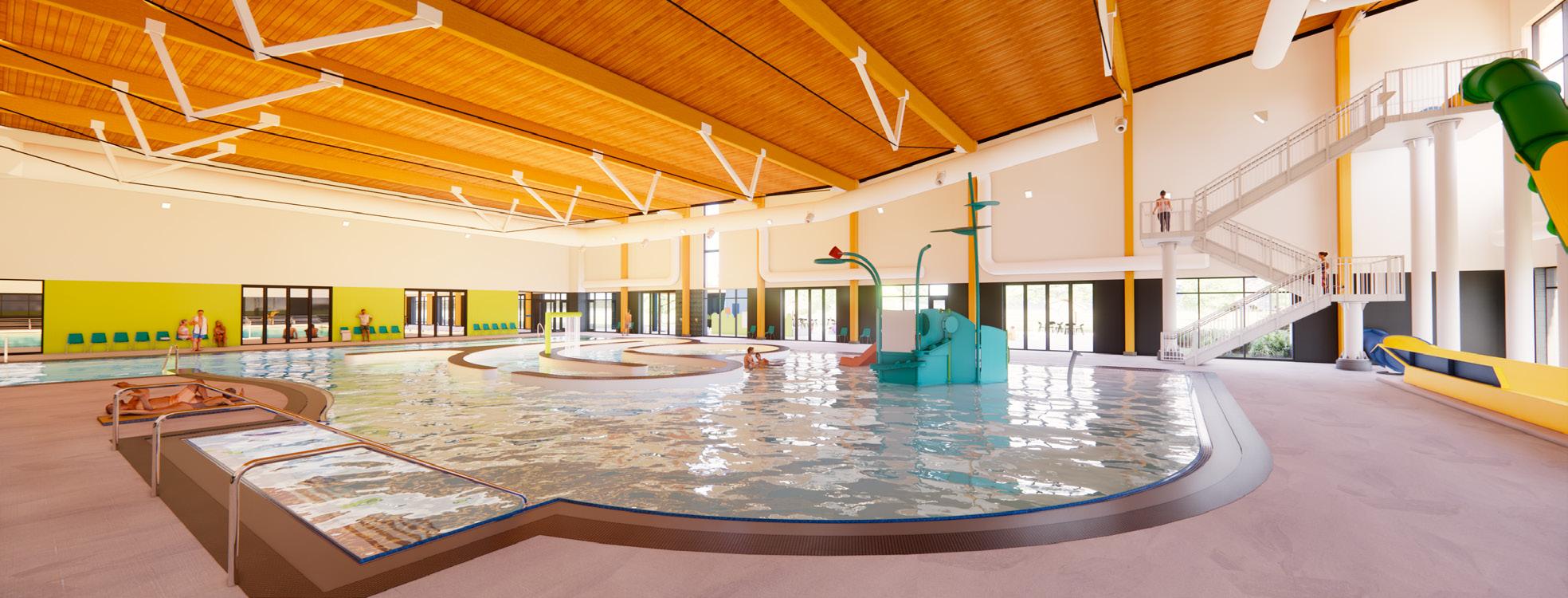
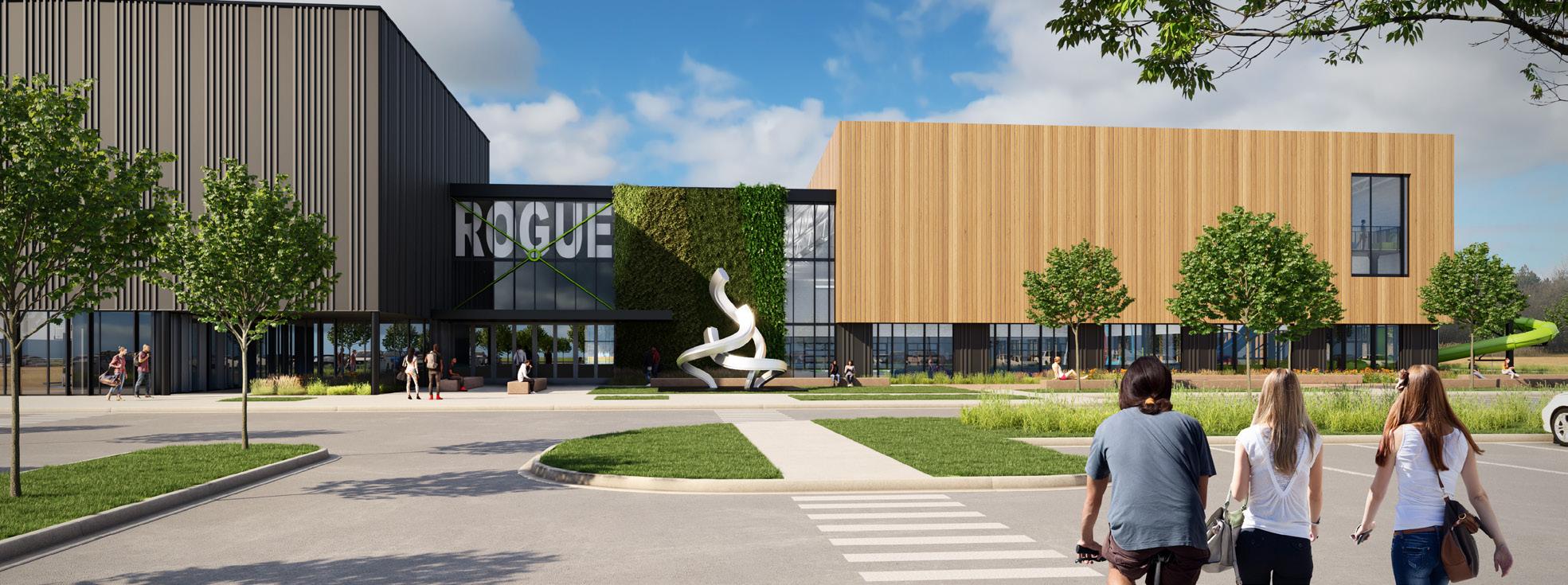
JUNE 2023 • COMMUNITYPLAYMAKER.COM | 39 sportsandrecreation@perkinswill.com perkinswill.com/sports-rec
By Tyler Williams
If you hovered above most American cities between the hours of 7 am-9 am, it would appear that car ownership is widespread. And it is. However, digging into the data will tell you a different story about the growing inequities in transportation and its impact on how we work and live.
In the U.S., 20 percent of people living below the poverty line report having no access to a personal vehicle, meaning they have to commute to work via public transit. According to Bethia Burke, president of The Fund for Our Economic Future, people without a car often have difficulty finding quality employment due to a lack of personal transportation.
“Access to transportation is a critical factor for equity,” according to Burke. “Many
residents, often in communities of color, face the paradox of ‘No car, no job. No job, no car.’ They’re essentially stranded because public transit doesn’t reach the suburbs where business growth has expanded in recent decades, and they can’t afford a car to get there.”
Unfortunately, public transit systems like buses and light rail have taken a significant hit since the onset of the COVID-19 Pandemic. Ridership hasn’t recovered to pre-pandemic levels, which presents challenges for many communities, particularly small and medium-sized cities when it comes to serving poor and under-represented populations.
And the timing couldn’t be worse. Inflation in the U.S. has led to a steady climb in the costs of nearly every consumer
good, including transportation costs. According to the U. S. Bureau of Labor Statistics, new car costs rose by 11.4 percent between June 2021 and July 2022. Used car costs rose 7.1 percent during that same period. Both statistics are driving people who can’t afford cars to depleted transit systems throughout the country.
The Ups and Downs of Public Transit in Fort Collins
The city of Fort Collins, Colorado (pop. 168,538) understands this dilemma all too well. According to Fort Collins Transit Planner Seth Lorson, the city’s bus system isn’t only hindered by a drop in ridership, it’s also impacted by “a huge shortage of operators,” causing them to offer fewer routes, less frequently.
“In 2022, we had 40 percent turnover in

40 | COMMUNITYPLAYMAKER.COM • JUNE 2023
Image Source: Adobe Stock
bus operators and are currently 20 drivers short, which is about 19 percent of the workforce,” Lorson said. He pointed to the lack of available and willing workers, as well as “the long time” it takes to hire and train drivers as reasons for the driver shortage.
Fort Collins officials hope that this is a bump in the road in a plan for equitable transportation that was initially established at the beginning of the 21st century. City leaders at the time became concerned with how population growth, which had climbed steadily through the 90s, would impact traffic in the region. Fort Collins had grown from 88,889 in 1990 to 122,239 in 2000. In response to this growth, Fort Collins’ city council approved the Mason Corridor Vision Plan in 2000. This master plan called for the transition of Mason Street, a north/south corridor, to become a transportation hub with capacity for bus, bicycle, and pedestrian traffic, including biking trails and an updated transit system. While voters turned down initiatives to fund the project twice, the city garnered funding from the federal government, including a $54 million grant from the U.S. Depart-
ment of Transportation. Project development began in 2011 with the city’s MAX Bus Rapid Transit (BRT) bus service launching in 2014.
“Our transit ridership was about 2 million prior to 2014. And then once the [bus rapid transit line] was implemented, it quickly doubled to over 4 million riders. Obviously, that was pre-pandemic,” according to Fort Collins Senior Transportation Planner Melina Dempsey.
The shortage of operators highly affected ridership, as did changes brought about by the COVID pandemic, including the mass adoption of remote work arrangements. In 2019, there were 4.5 million riders on the city’s bus system, but ridership fell to only 1.75 million in 2022. Decreased ridership led to fewer routes being implemented which greatly impacts Fort Collins’ ability to provide enough bus access for the city’s vulnerable residents.

Planning for a More Equitable Transit System
Now more than three years removed from the onset of the COVID-19 pandemic, Fort Collins has a plan to breathe new life into its public transit system. Seeing the importance of equitable transportation for its residents, they are making it a point of emphasis in the revitalization.
The city developed a master plan to outline a long-range vision for land use and transportation. City transit planners went into vulnerable, lower-income neighborhoods throughout Fort Collins to gain
perspective on the needs of riders.
One major change Fort Collins implemented during the pandemic is going fare-free, which they are now exploring as a permanent change. The city determined that going fare-free is cheaper than collecting fares from riders because they must pay staff to collect fares, as well as purchase and maintain automated ticket vending machines, which cost hundreds of thousands of dollars a year to maintain. Lorson said there were “so many steps required for collecting fares that we’re finding that it wasn’t worth it…we’re creating unnecessary barriers.”
On top of going fare-free, Fort Collins also plans to expand the MAX BRT system to the North College Corridor, which is home to a heavy concentration of underserved, low-income, and immigrant populations. Transportation projects take a long time to finalize, but the city is prioritizing the North College Corridor to expand coverage to underserved populations in the neighborhood. “The MAX took 20 years to implement. So…we’re doing a phased approach to try to get this to happen [in the neighborhood] much, much sooner,” said Lorson.
Fort Collins also plans on implementing micro-transit “innovation zones” later in 2023, which they will finance through a state grant. The city received $60,000 in funding from an Office of Innovative Mobility (OIM) grant via the Colorado Department of Transportation (CDOT). They also recently applied for a $4 mil-
JUNE 2023 • COMMUNITYPLAYMAKER.COM | 41
“Many residents, often in communities of color, face the paradox of ‘No car, no job. No job, no car.’...”
President of The Fund for Our Economic Future, Bethia Burke
lion Federal Highway Administration (FHWA) ATTAIN grant, which would be used for planning/implementation.
These innovation zones are focused on areas that can’t support high-frequency bus routes due to low population density. Without regular bus access, residents in these areas are often left without reliable public transportation. These low-density neighborhoods tend to be clustered on the outskirts of the city, away from the city center. While they aren’t the poorest neighborhoods in the city, innovation zone residents without access to reliable vehicles currently have limited public transportation options.
The city’s innovation zones will expand service to low-density neighborhoods by utilizing “micro-transit”, which are
budget-friendly transit options that are smaller than a typical city bus. Lorson explains that the city plans to provide residents in low-density areas with “small shuttles that [will] go around, be on call, and provide people with transit service, kind of like our Dial-a-Ride service that we have for disabled citizens, but for every person, no matter what.”
Designing a Bike-friendly City
Fort Collins consistently ranked as one of the most bike-friendly cities in America. The city’s residents, utilizing over 200 miles of dedicated bike lanes, bike to work at 11 times the national average. Designing a bike-friendly city is important from an equity standpoint as it allows residents to access jobs, schools, parks, shops, and other public spaces without the need of a car.
When asked what other cities can learn from Fort Collins’ success as a bike-friendly city, Cortney Geary, the active modes manager for Fort Collins, emphasized the importance of community engagement.
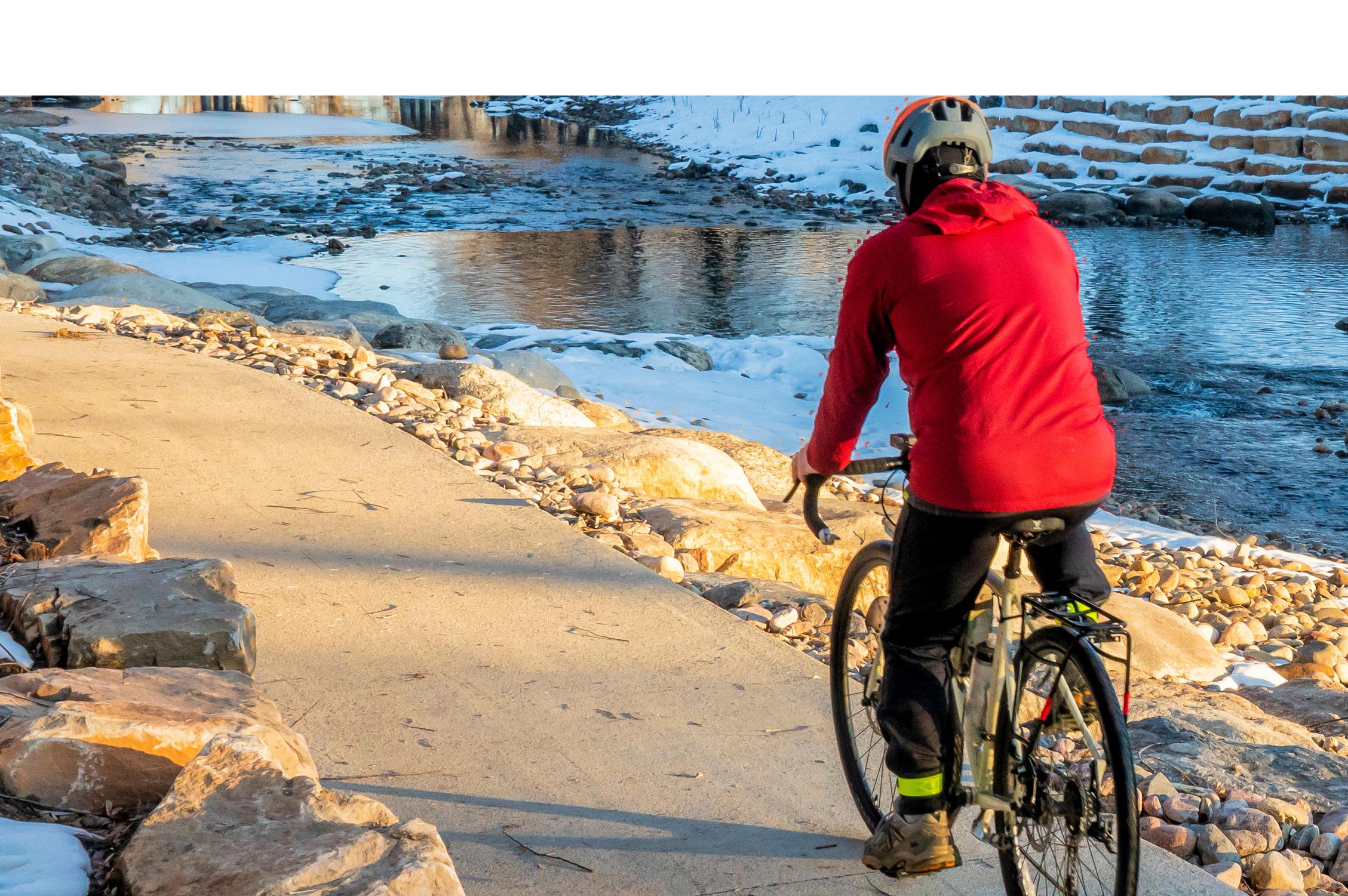
“I think it’s really a combination of developing the infrastructure, the bike network, pairing that with education and engagement, and then the right policy landscape to support those modes of transportation that are most equitable, cost-effective, environmentally friendly,” Geary said.
She cited several programs and initiatives the city implemented to increase bike ridership. There is a Safe Routes to School program, which teaches students how to safely bike and walk to school. The Bike Ambassador and Bike Buddy program utilizes community members who are passionate about teaching fellow residents
Image Source: Adobe Stock
The city’s residents, utilizing over 200 miles of dedicated bike lanes, bike to work at 11 times the national average.
Fort Collins also has up to 80 bike-towork day stations, while many cities only have one equivalent station, usually located in their downtown area. In Fort Collins, they are spread throughout the city, which encourages residents in all neighborhoods to bike, walk, or take a scooter to work.
Bike-to-work stations are sponsored by local businesses and organizations and provide free breakfast to bicyclists, walkers, and scooterists. Ultimately, the primary reason why Fort Collins has so many of these stations compared to other cities is that there is such high demand and community buy-in. Bike-to-work stations are a major grassroots effort led by local businesses, organizations, and residents who are passionate about cycling.
Lessons Other Cities Can Learn
Community engagement and education are essential because an engaged and educated population usually demands change and actionable improvements. This is certainly the case in Fort Collins.
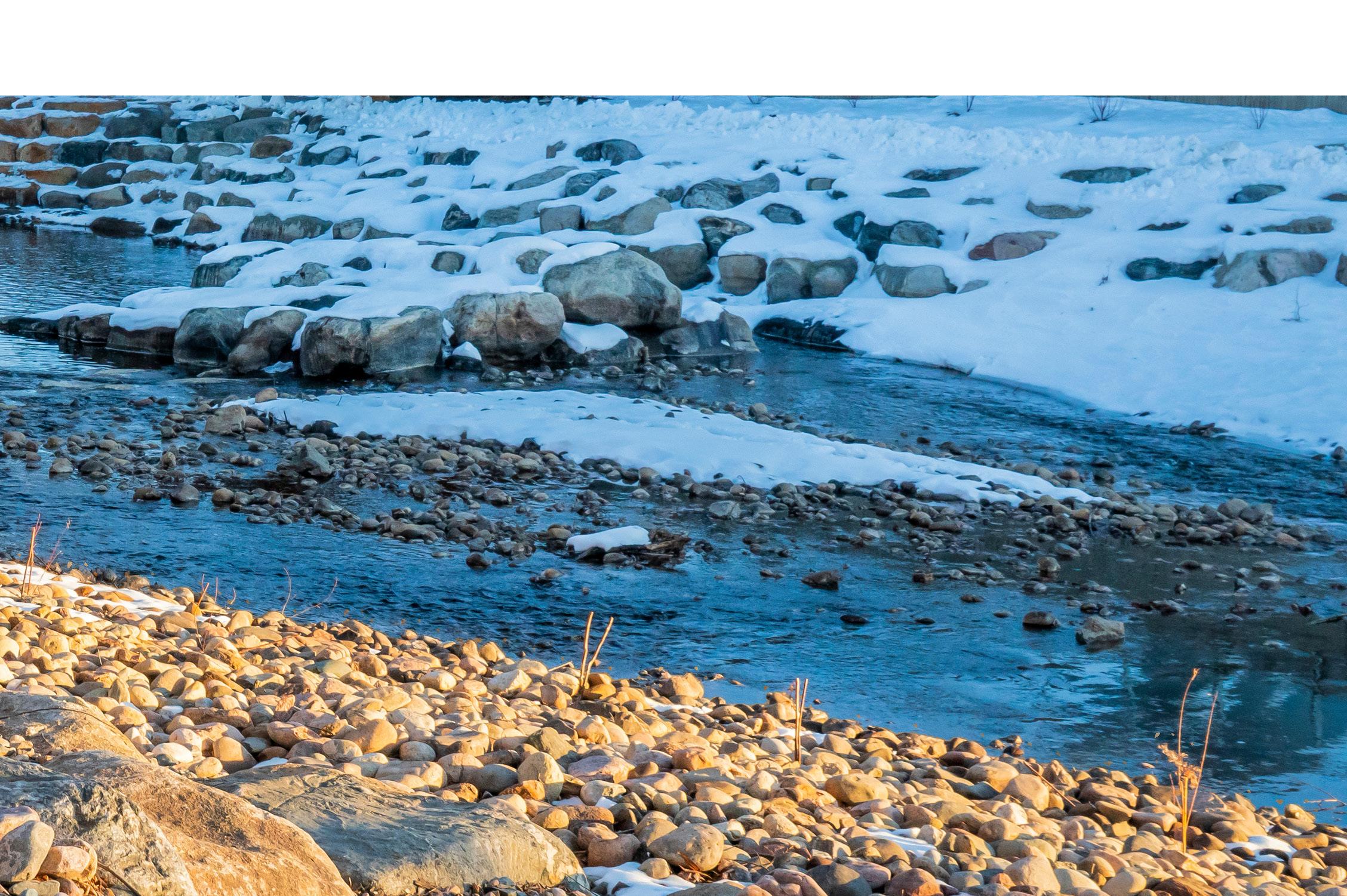
“I think [increased infrastructure] comes with funding, both funding for that infrastructure, having the dedicated funding sources, pursuing grants to do those projects, but also funding the staff. There are comparable cities of our size across the nation that don’t have the equivalent to my position,” said Geary. “If you don’t have the staff capacity to run these programs, you won’t see the level of success that Fort Collins has had.”
“All [of our] programs and education have really built up a culture and community support and awareness for biking here. And that creates this body of people who are demanding improvements to the infrastructure and electing leaders who are funding and supporting that infrastructure,” according to Geary.
This is a sentiment that resonated throughout the city’s leadership and has led to even greater support for transportation equity through cycling. Mayor Jeni Arndt, as a candidate in 2021, expressed support for increasing bike access, telling Bike Fort Collins that she is “all in on bikes.” She is particularly concerned about increasing access and safety for students. “I still find it a bit astounding that we don’t have wide, safe bike routes to all schools. That’s where we build lifelong bicyclists,” she said.
Achieving equity in transportation is an issue all cities face. What makes Fort Collins’ solution so relevant and effective is that it’s a true community solution. Through local government and business community support, as well as advocacy from the residents, the city is working to provide access to transportation and a higher quality of life for all citizens.
Check out the schedule of regional Community Playmaker Summits coming this fall! Community Playmaker Summits can be found in locations throughout the country and feature a dynamic line-up of regional leaders who will provide strategies and inspiration to help you develop game-changing projects in your community.
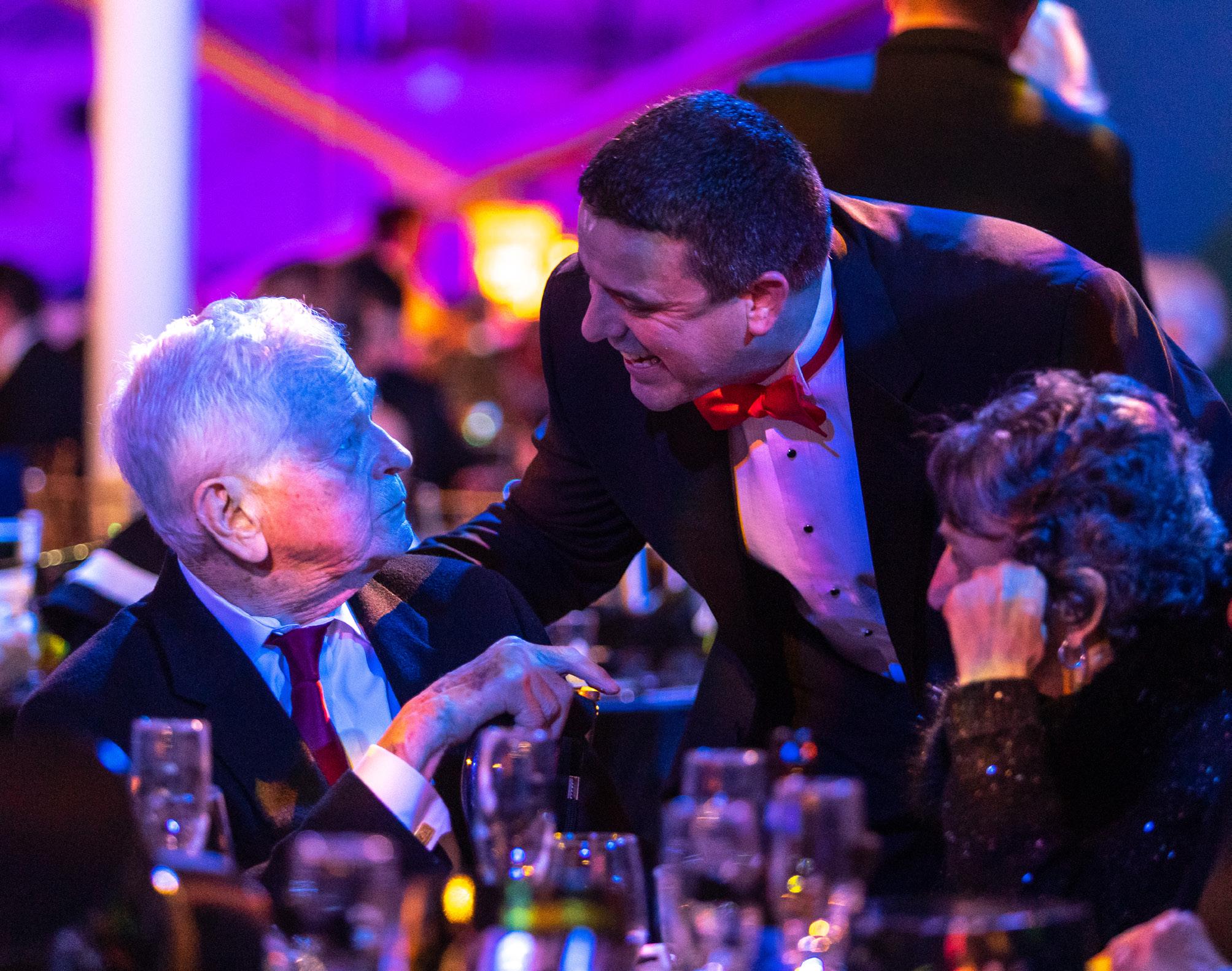 Image Source: Cedar Point Sports Center
Image Source: Cedar Point Sports Center
UPCOMING PLAYMAKER EVENTS
Our inaugural Community Playmaker’s Summit will take place on Thursday, August 31st at Rocky Mount Event Center in Rocky Mount, North Carolina. Summit:NC will set the tone for our event series by helping attendees build upon strong peer connections and learn from a wide array of subject matter experts. The event will supply regional leaders with the knowledge, tools, and best practices for creating/enhancing a sport and event complex in your area.
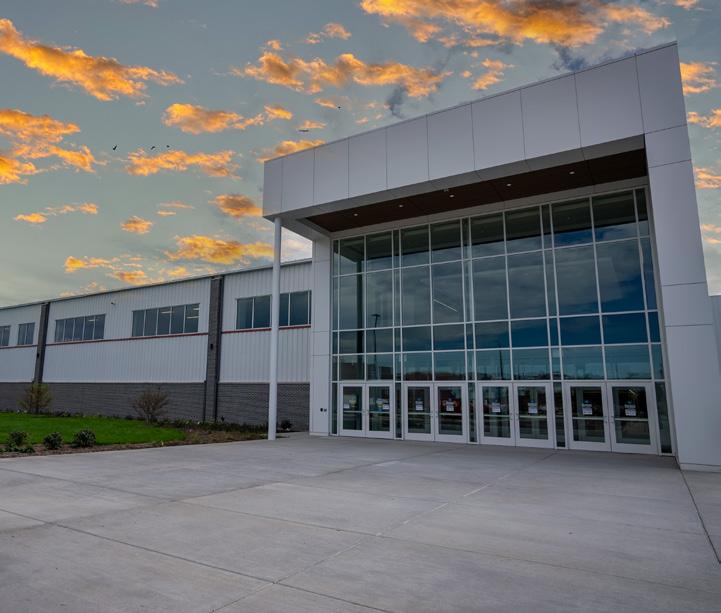
Bedford Park, Illinois will be the host of Community Playmaker’s Summit:IL on Thursday, September 13th. For this informative event, local community leaders will gather together to share and learn about the best ideas and innovations in outdoor recreation, an $862 billion segment of the United States economy. At Wintrust Sports Complex, civic leaders will garner valuable knowledge on the convergence of parks and recreation with sports tourism and how your area can build a strategy that benefits residents, local businesses, and visitors.
Community Playmaker’s third gathering of regional civic leaders will make a stop in Texas’ Legends Event Center, a state-of-the-art sports, event, and gaming complex will play host to Summit:TX . The event will take place on Thursday, October 18th and topics for discussion will include innovations in the funding, design, and management of multipurpose complexes, economic impact through case studies, the convergence of sports tourism and outdoor recreation, and much more.
It’s our hope that the information provided, and the peer-to-peer connections attained will spark new ideas and be a source of inspiration for new projects in your community. For more information on speakers and times visit:
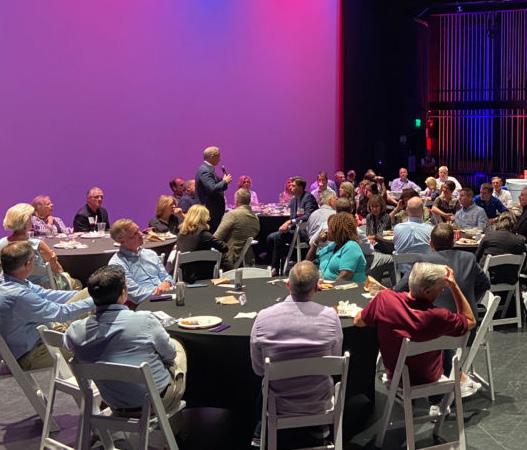
communityplaymaker.com/events

JUNE 2023 • COMMUNITYPLAYMAKER.COM | 45
8.31.23 PLAYMAKER SUMMIT:NC Location Rocky Mount Event Center Rocky Mount, North Carolina 9.13.23 PLAYMAKER SUMMIT:IL Location Wintrust Sports Complex Bedford Park, Illinois 10.18.23 PLAYMAKER SUMMIT:TX Location Legends Event Center Bryan, Texas Industry Events






46 | COMMUNITYPLAYMAKER.COM • JUNE 2023
“With LS&S, we have been able to significantly increase the level of service to the community, while also reducing annual costs.”
- Mayor of Moreno Valley, CA
Mayor Gary Chesney of Morristown, Tennessee standing in front of Morristown Landing. Their new venue embodies the collision between the recreation and sports tourism industries with four hardwood basketball courts, an aquatic center, a fitness center, play climb elements, and meeting and event spaces. It will provide Morristown (pop. 30,777) with a state-of-the-art facility for recreational programming and has the capacity to host regional basketball and volleyball tournaments.
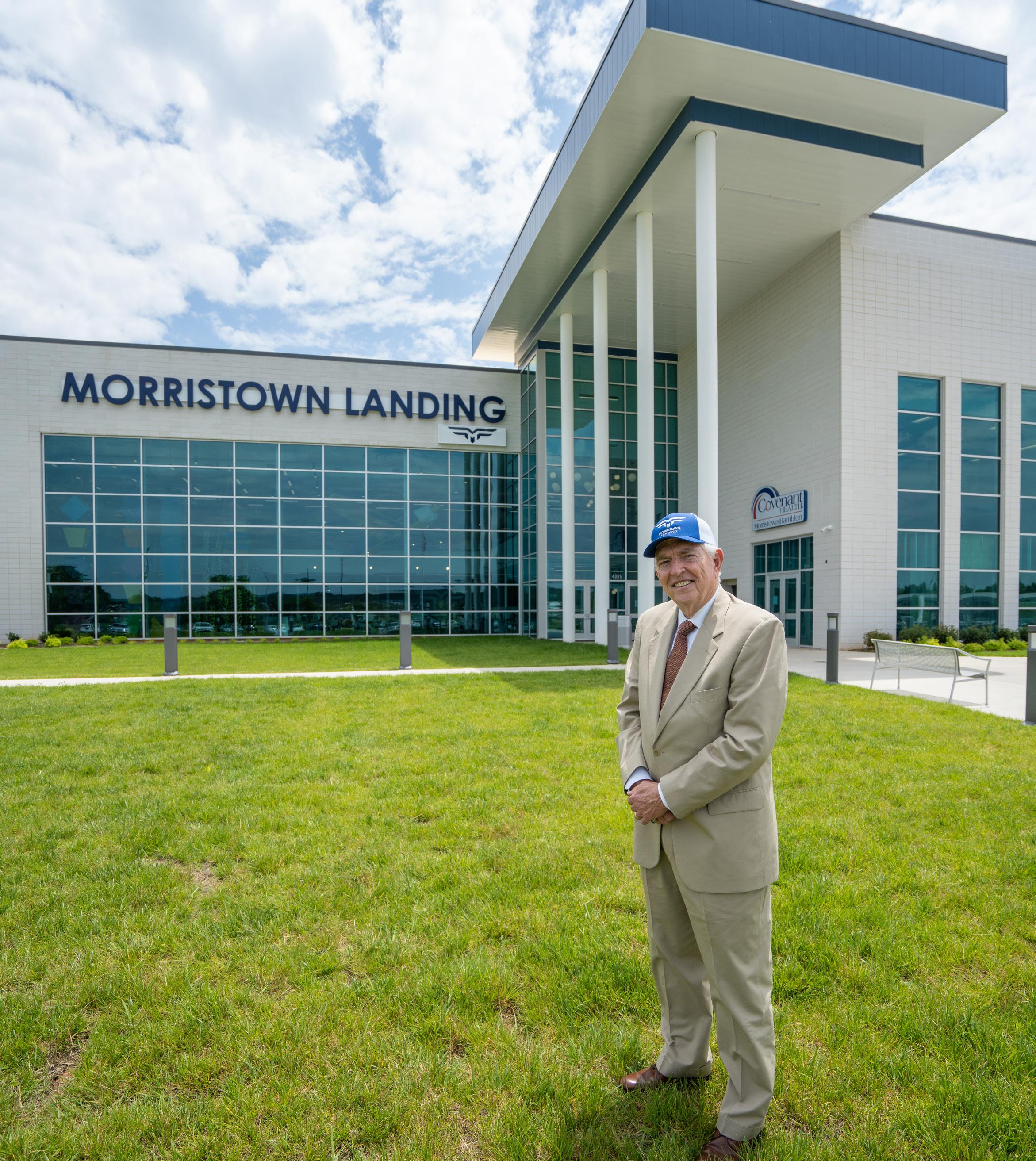 Image Source: Camera Castle
Image Source: Camera Castle
SUBSCRIBE










 Brantley Gilbert Concert | Summer 2021
Brantley Gilbert Concert | Summer 2021







 5 at Sand Mountain
Image Source: Sand Mountain Park & Amphitheater - SoFly Productions
5 at Sand Mountain
Image Source: Sand Mountain Park & Amphitheater - SoFly Productions
























































 Image Source: Cedar Point Sports Center
Image Source: Cedar Point Sports Center









 Image Source: Camera Castle
Image Source: Camera Castle
